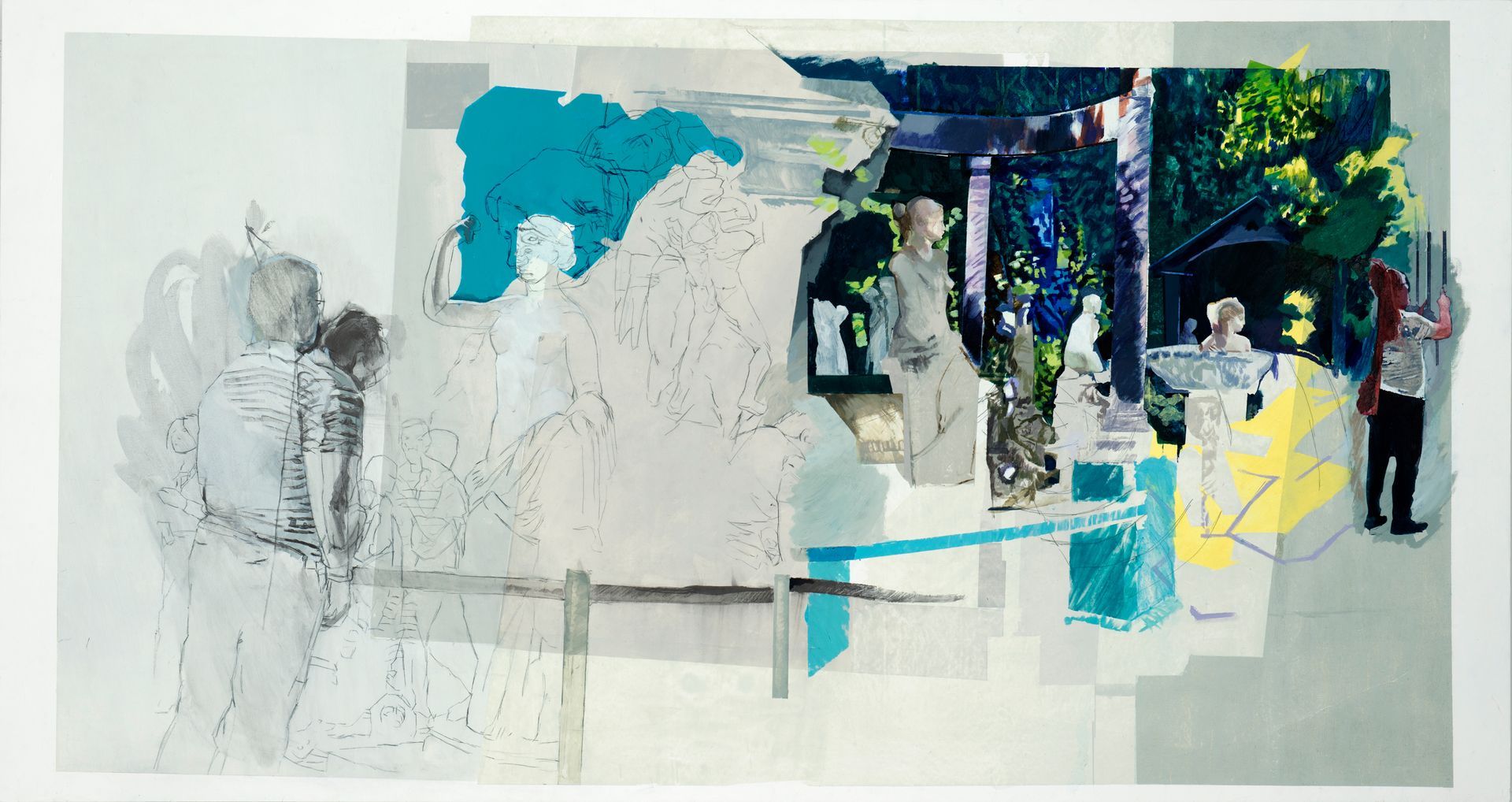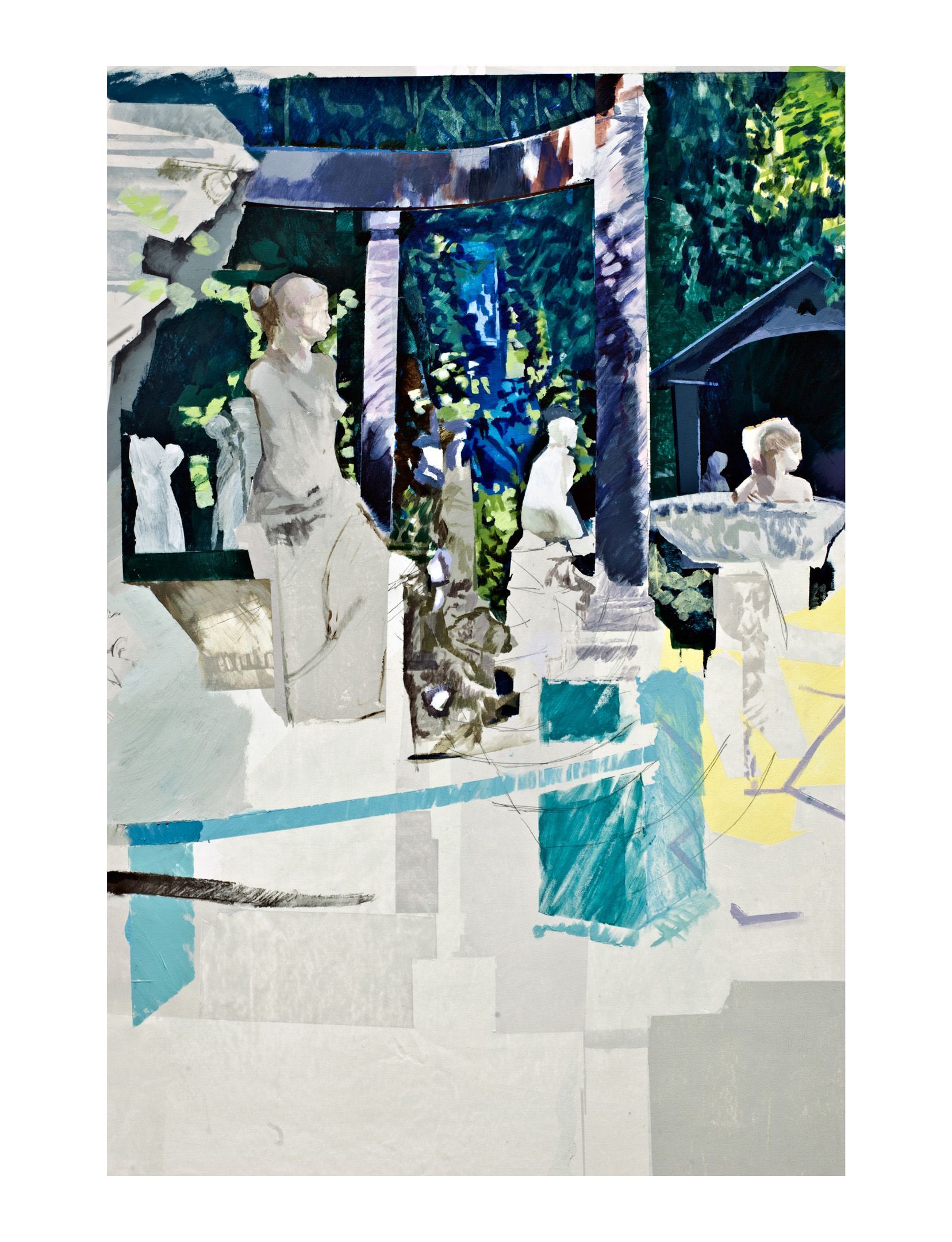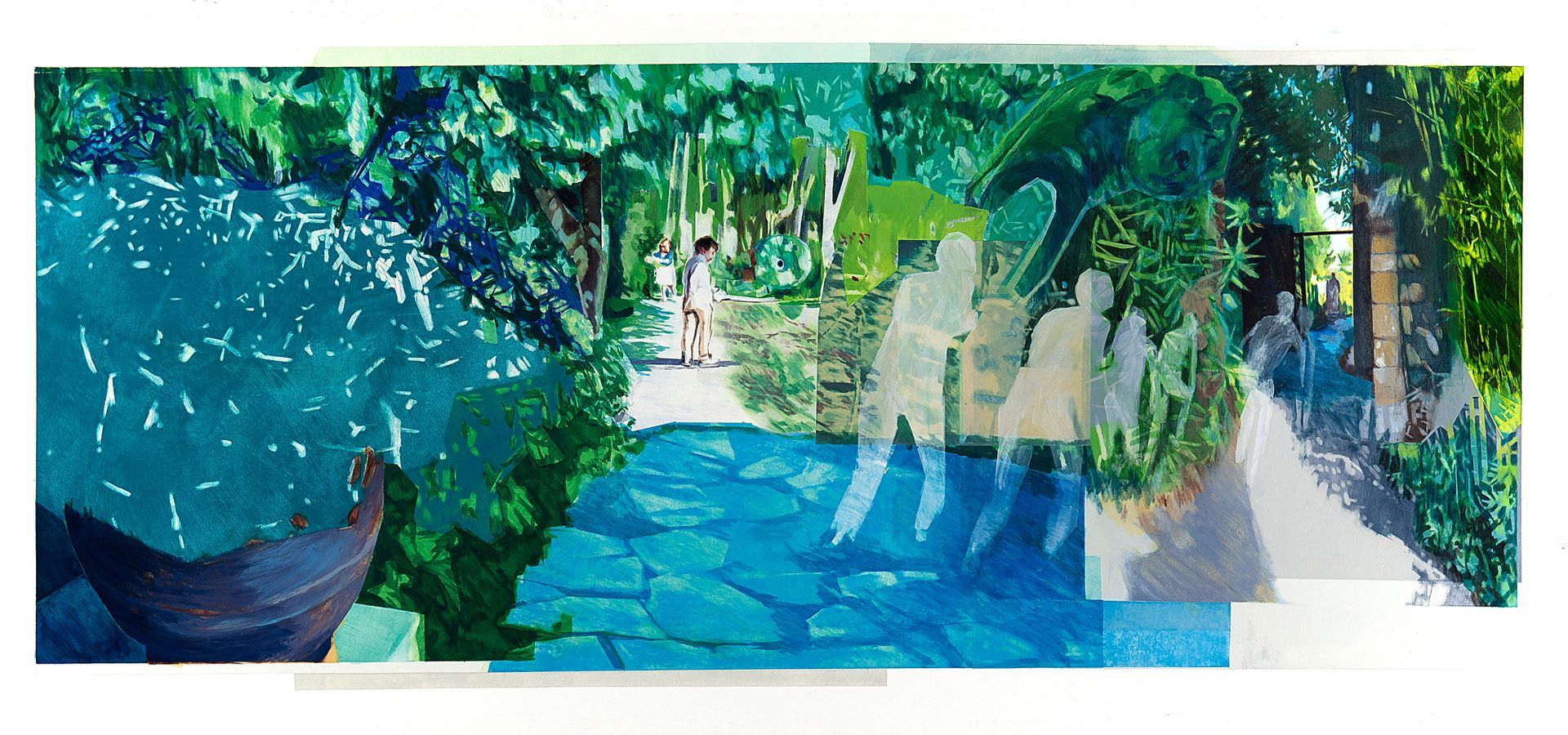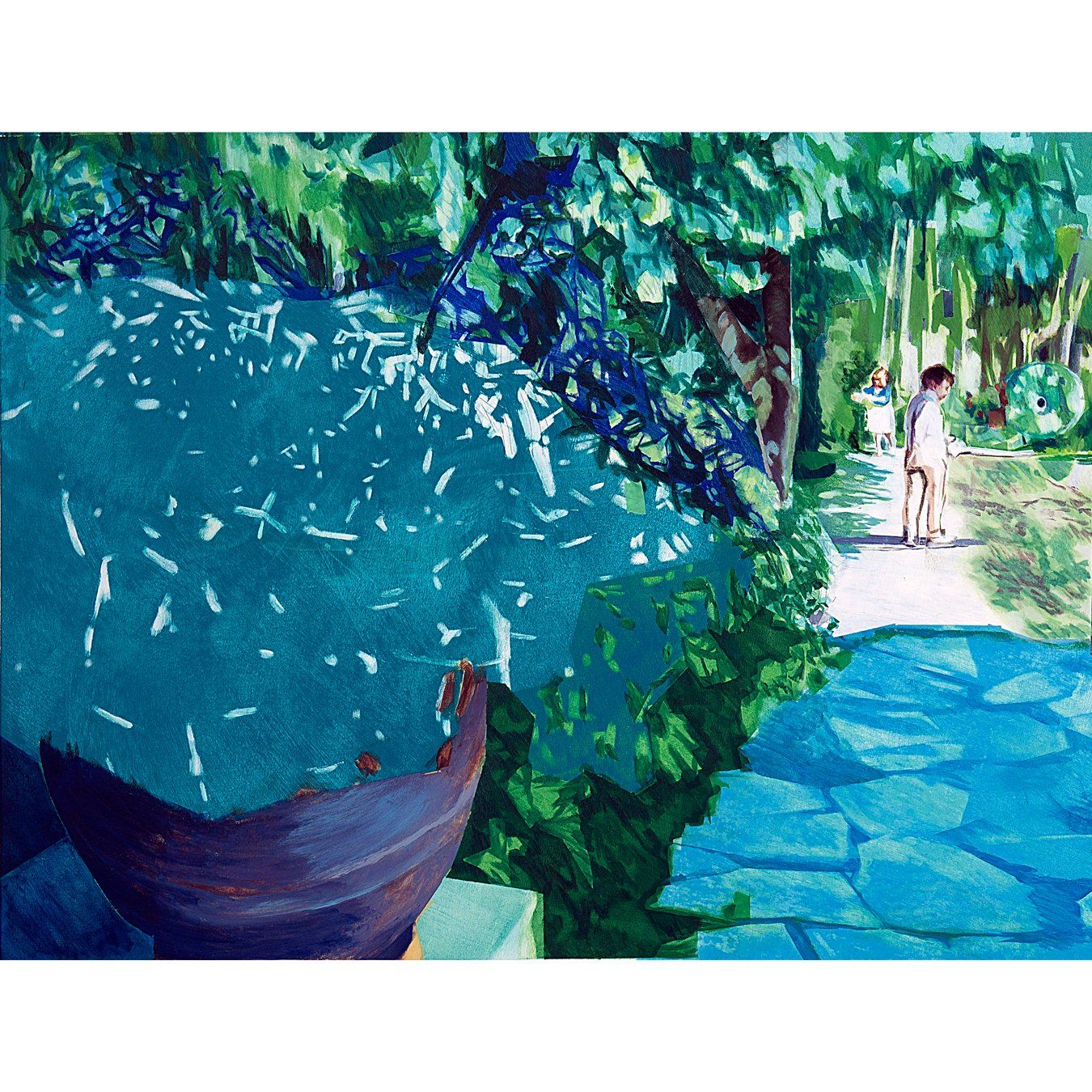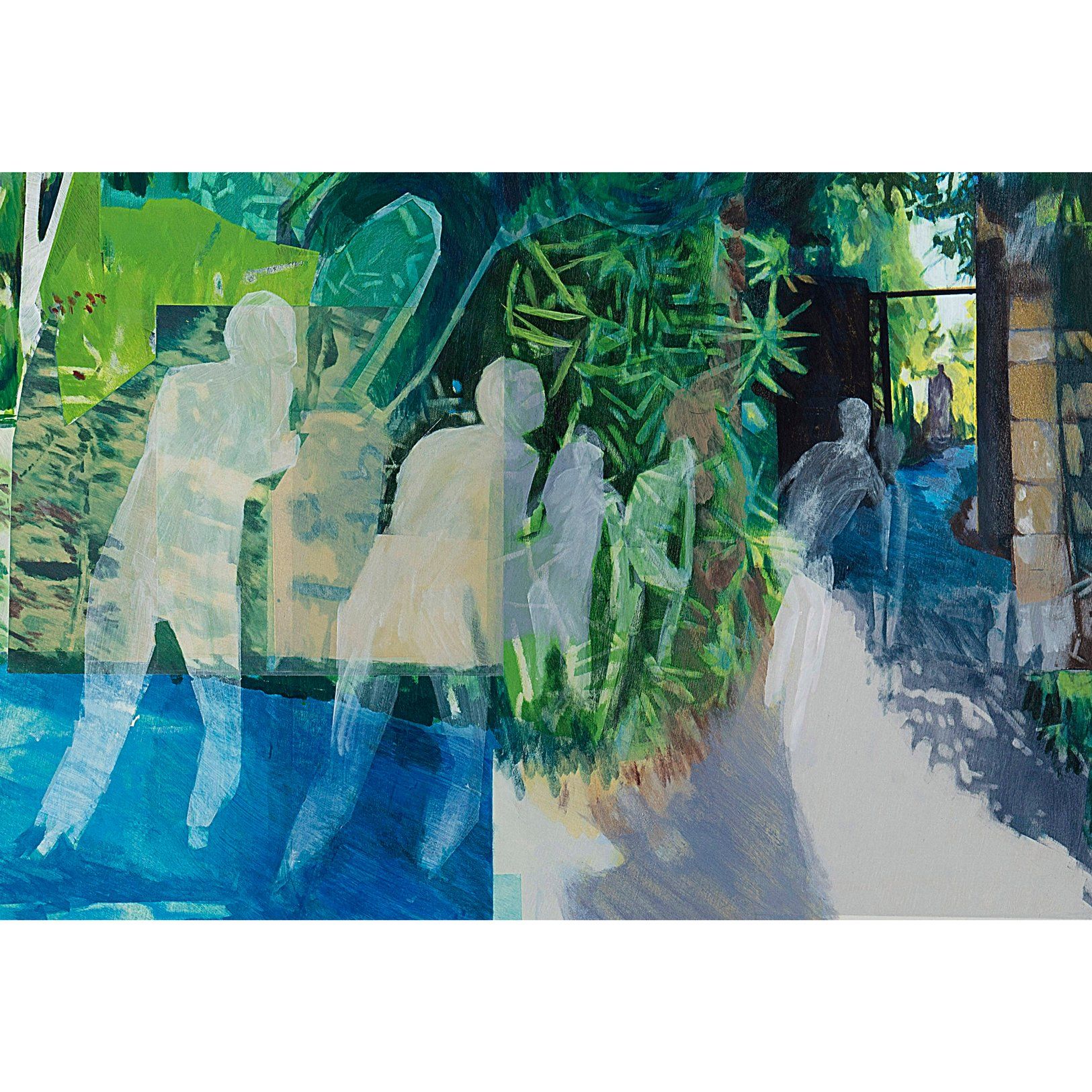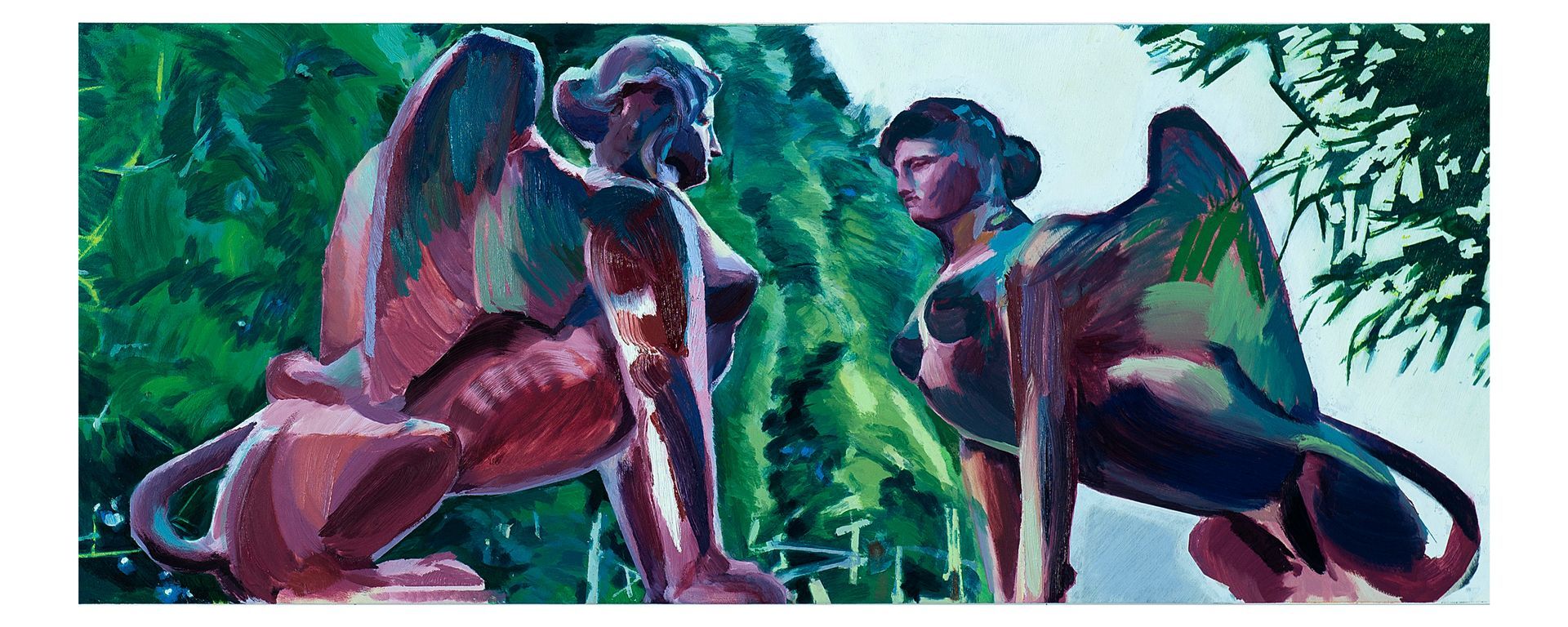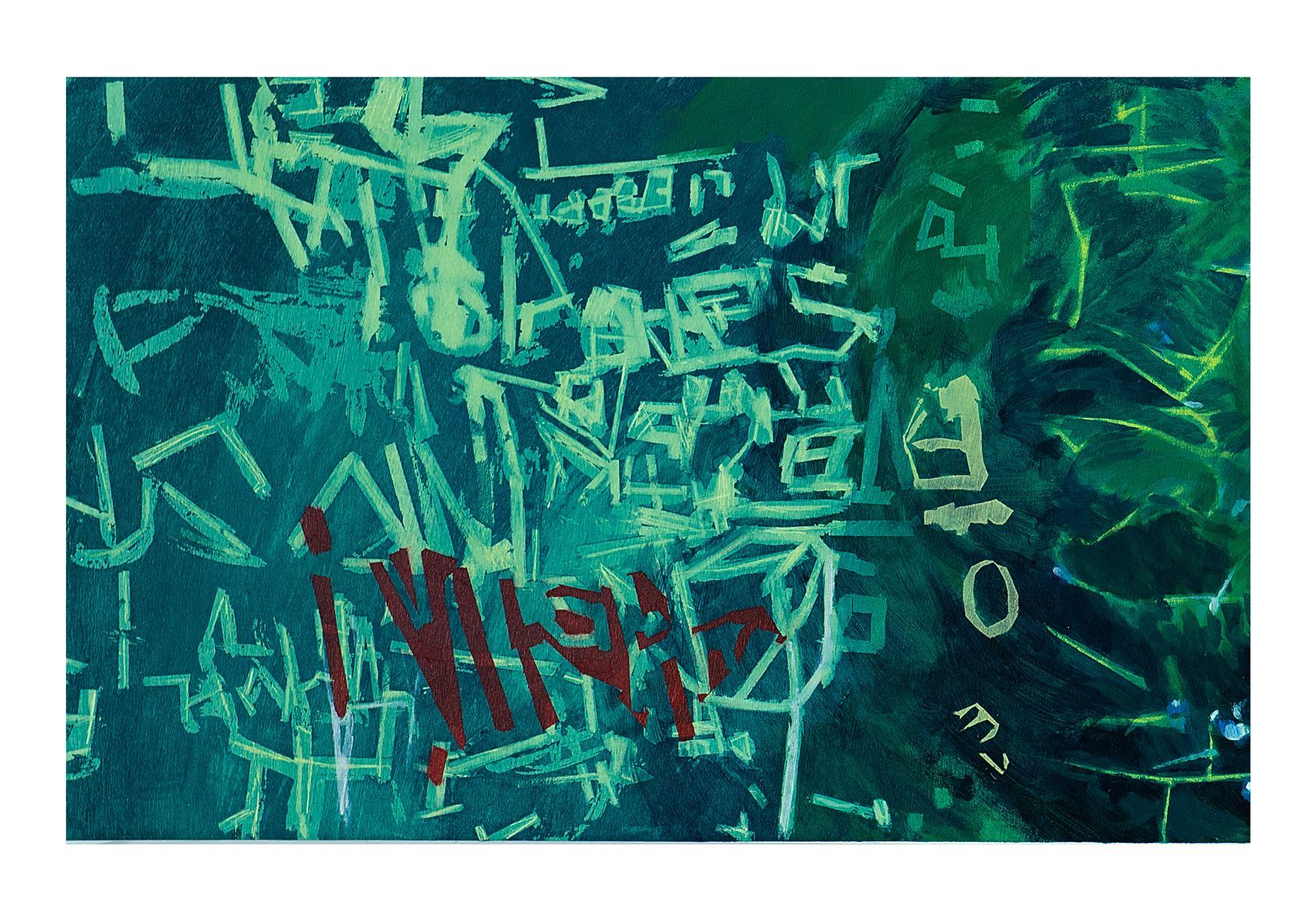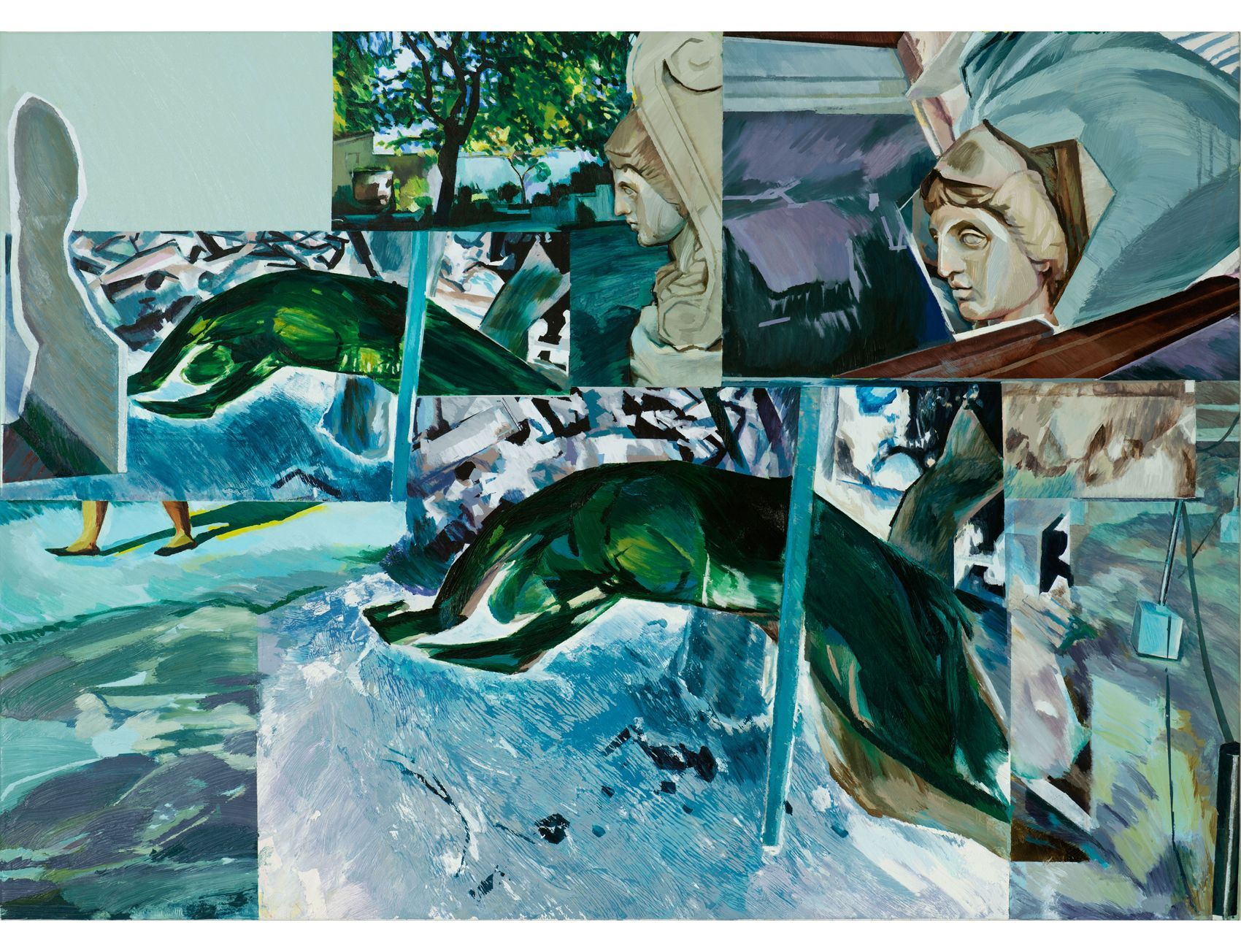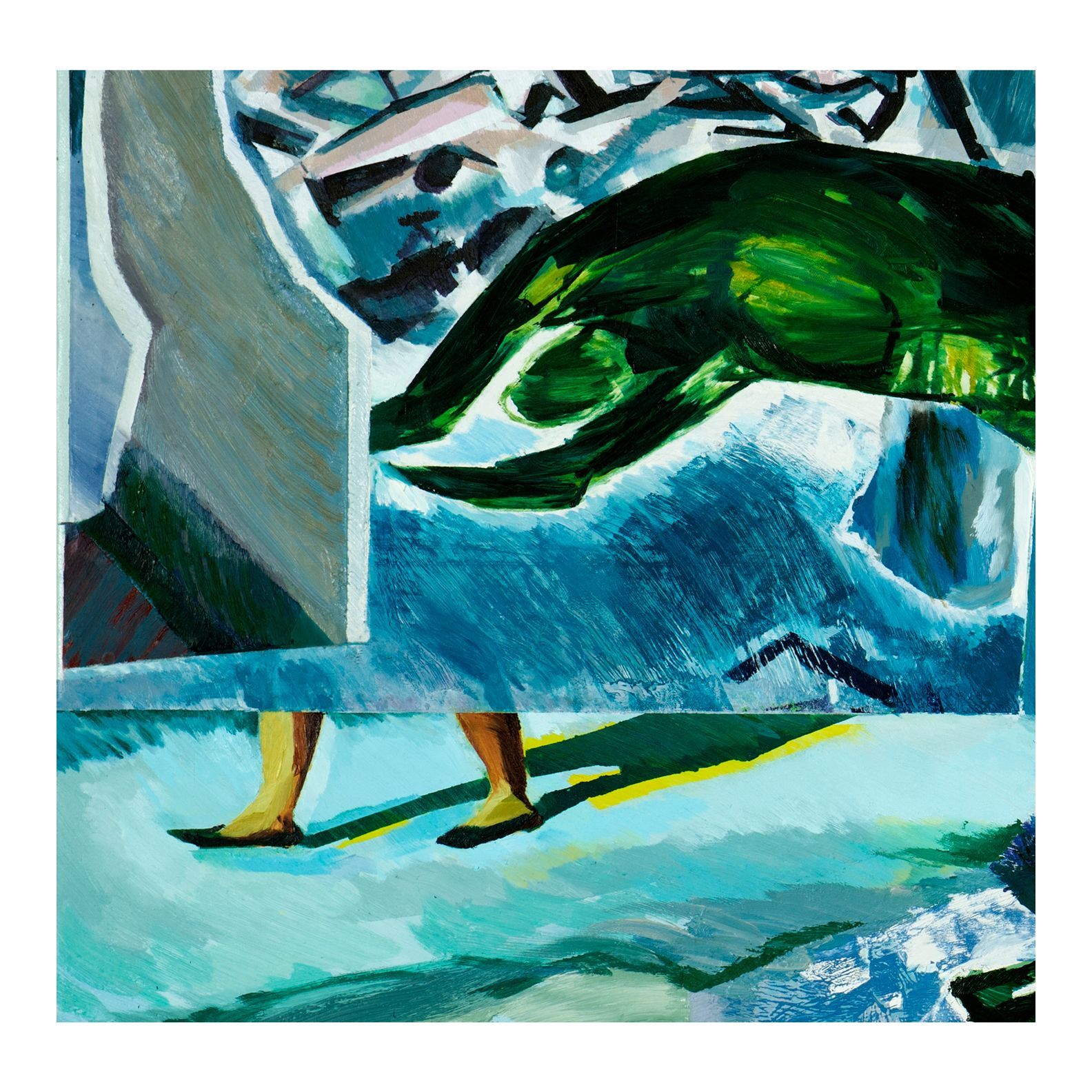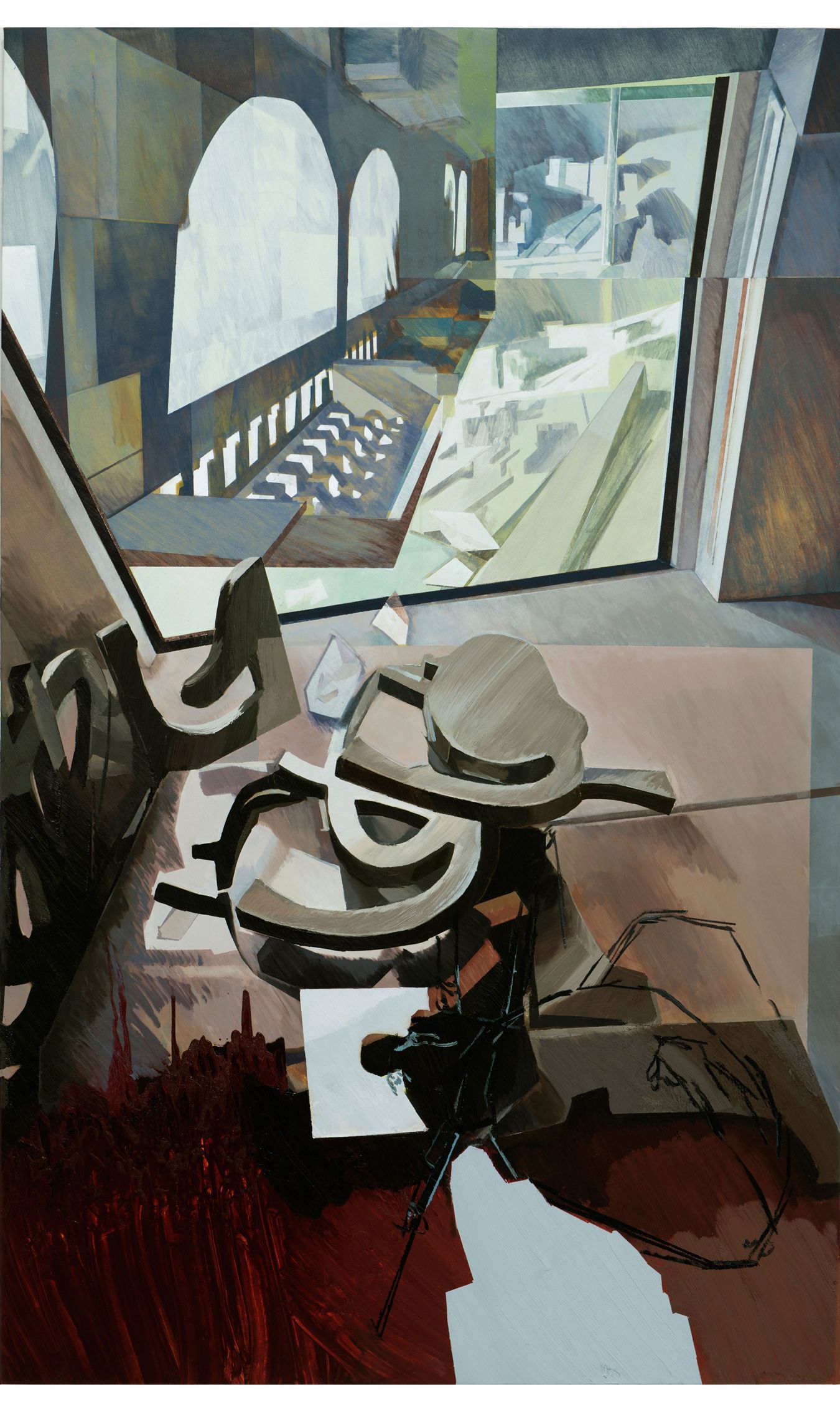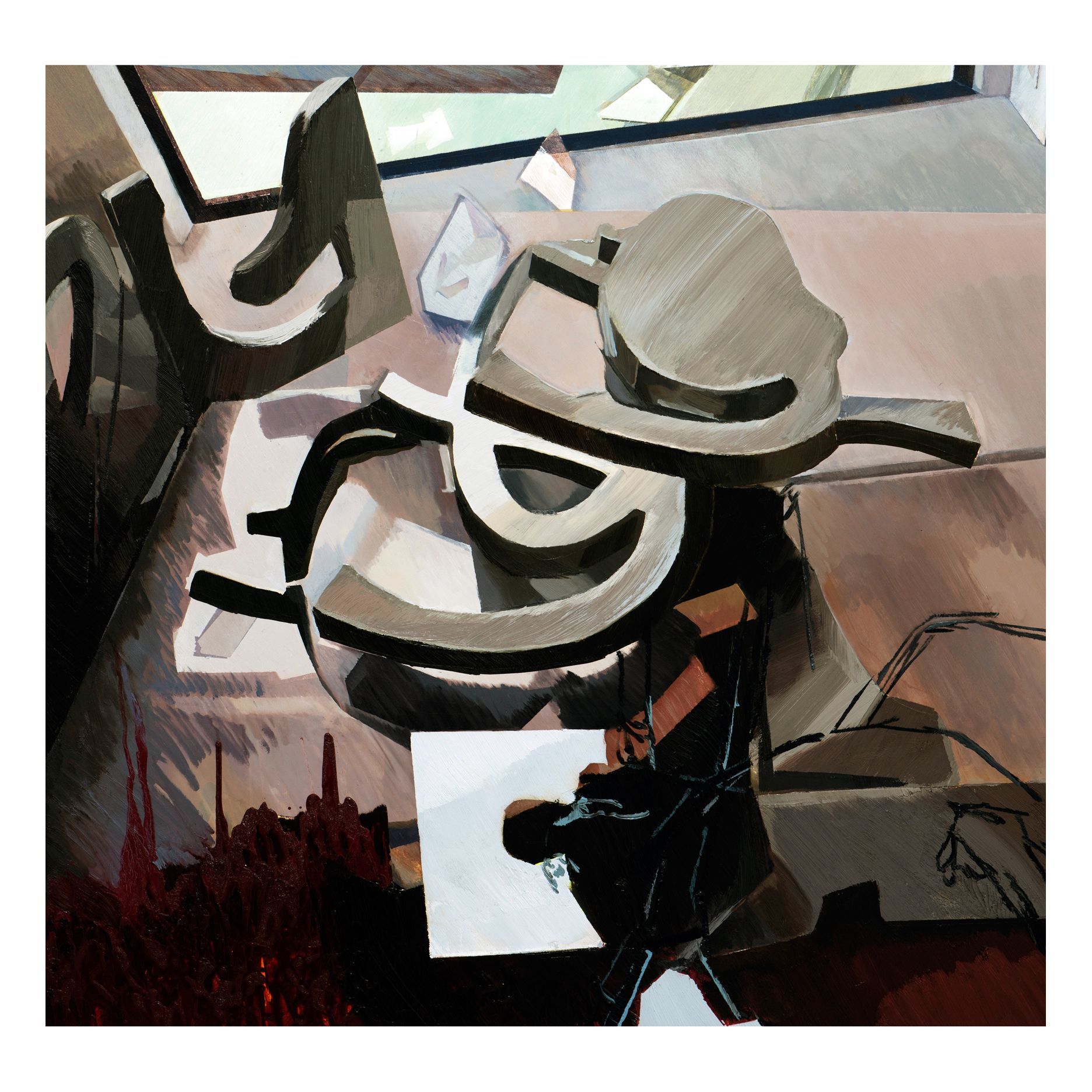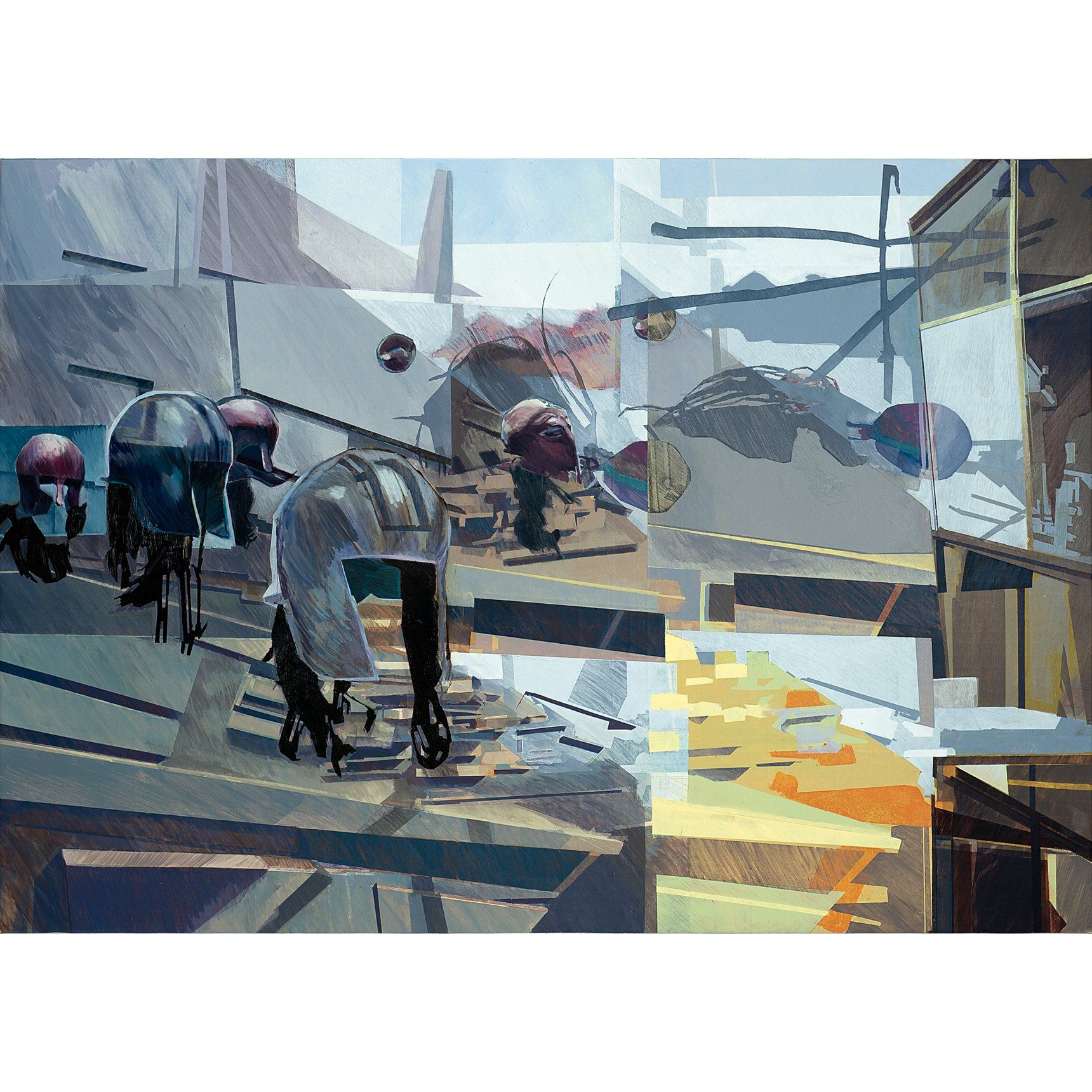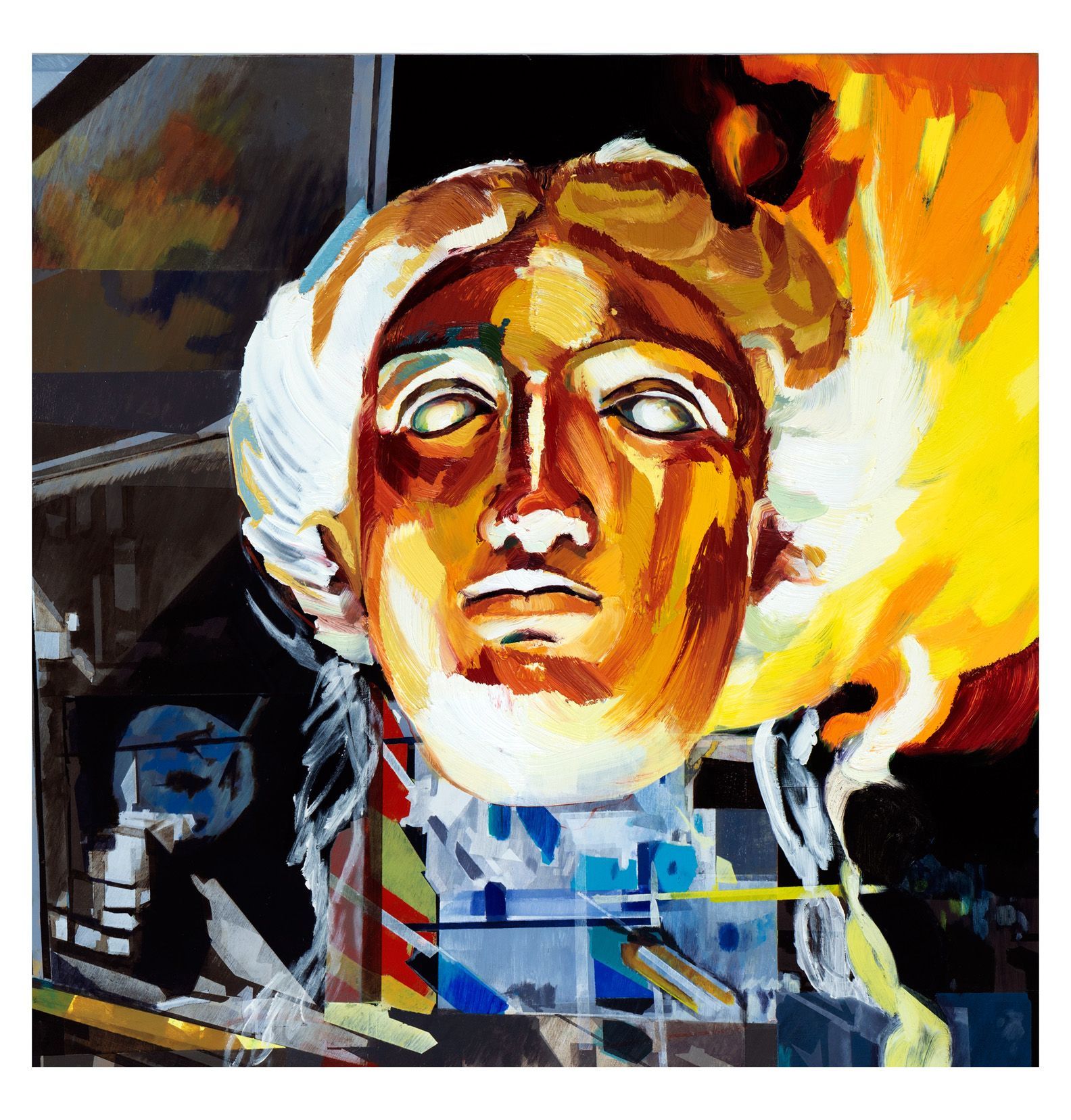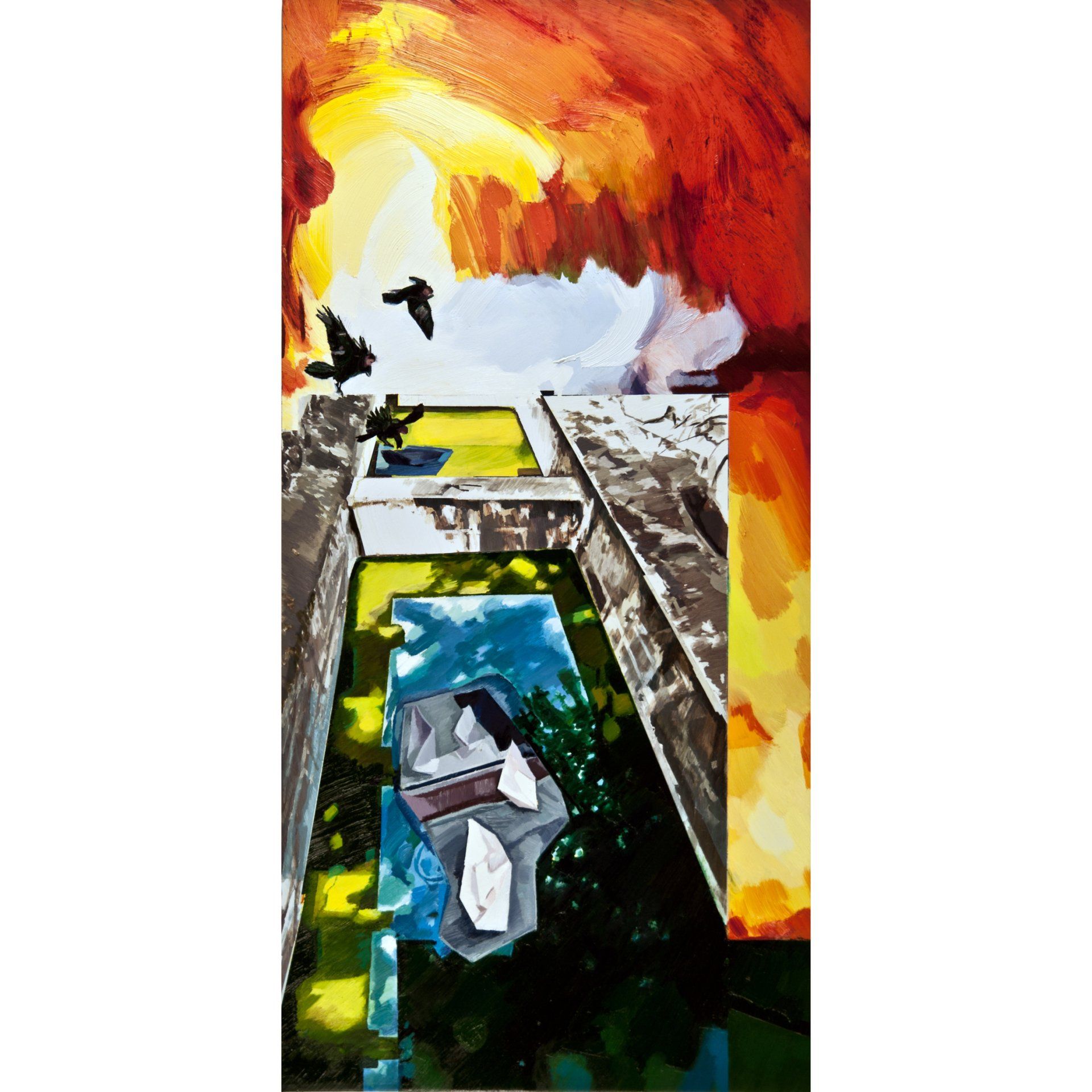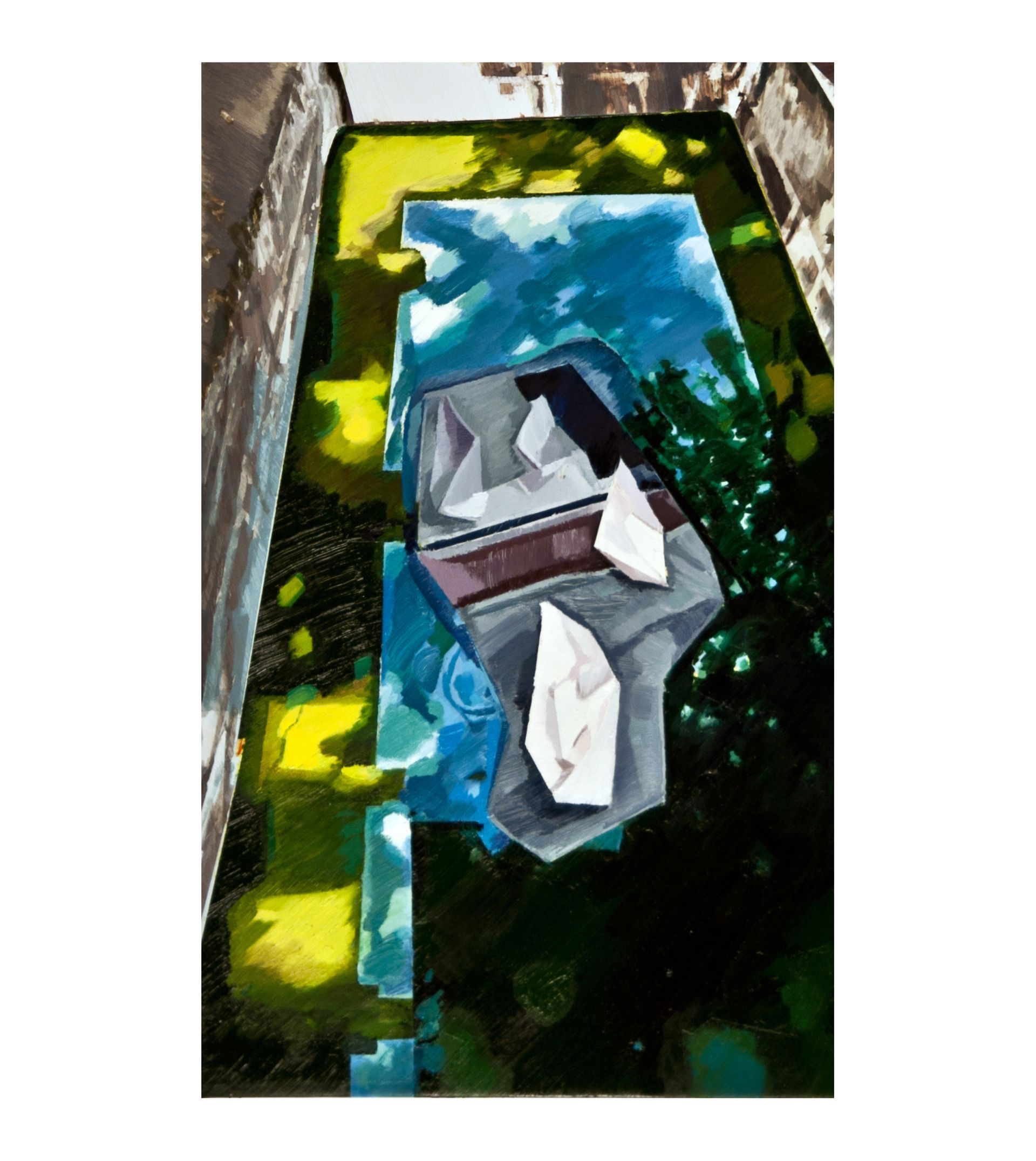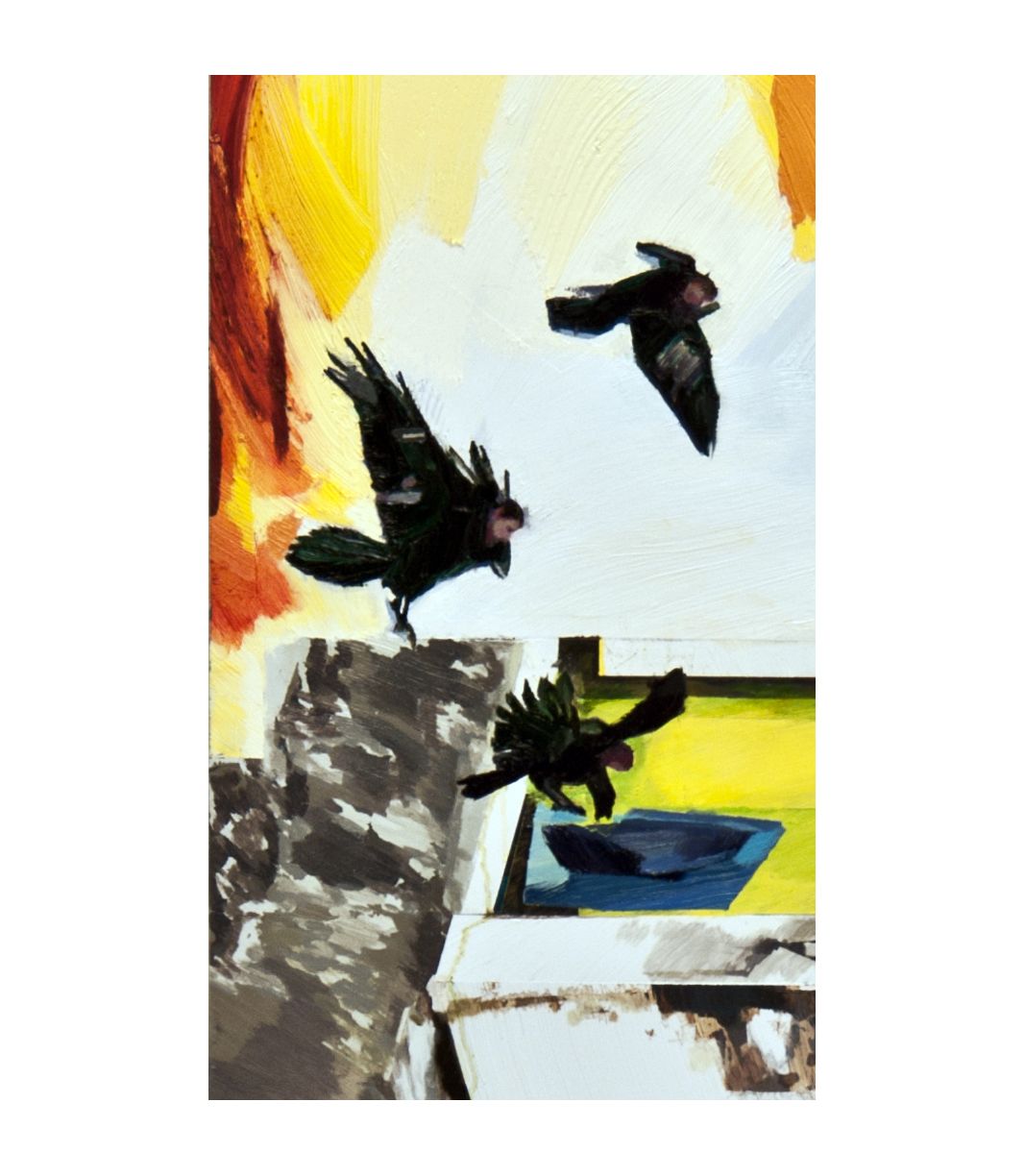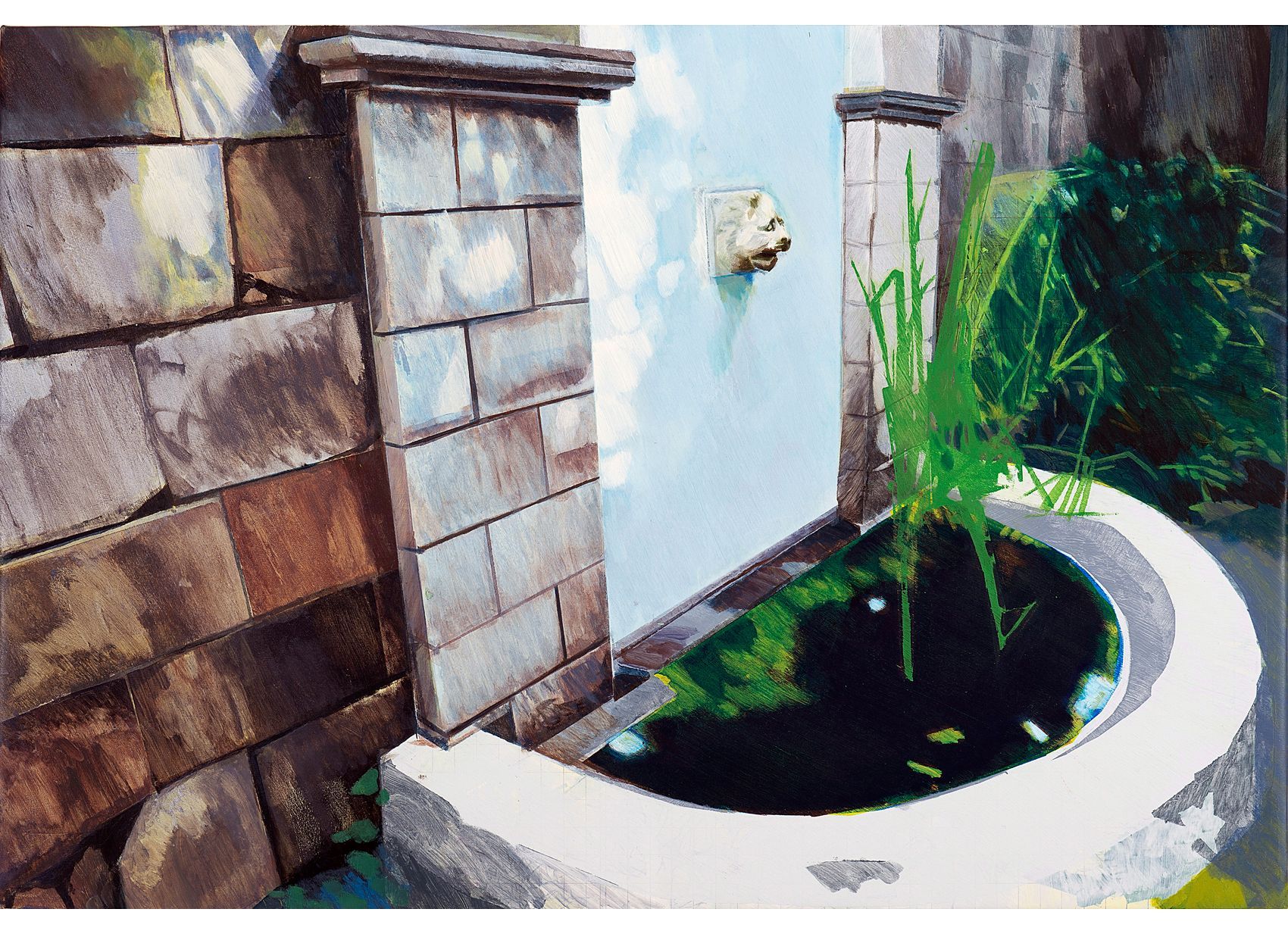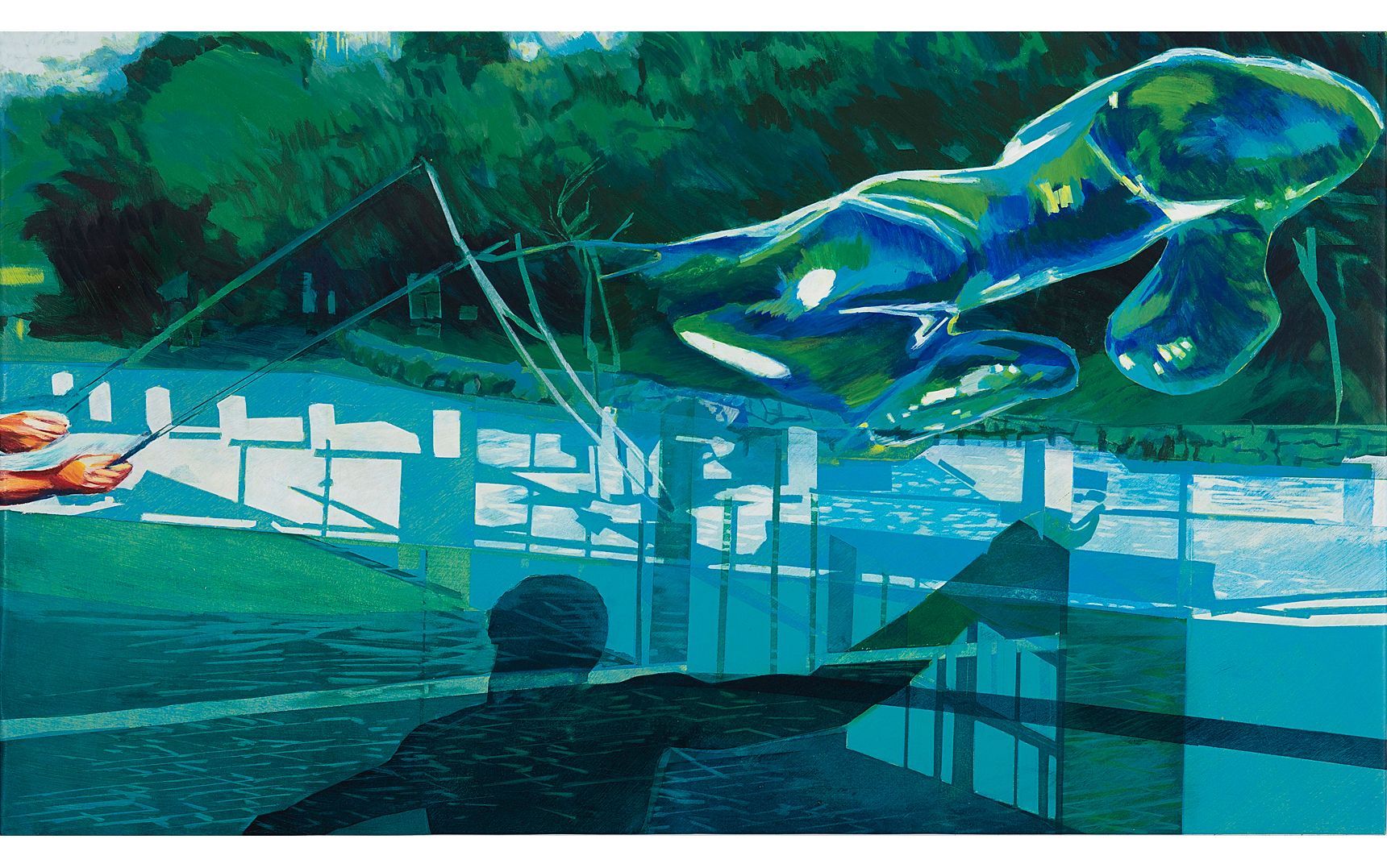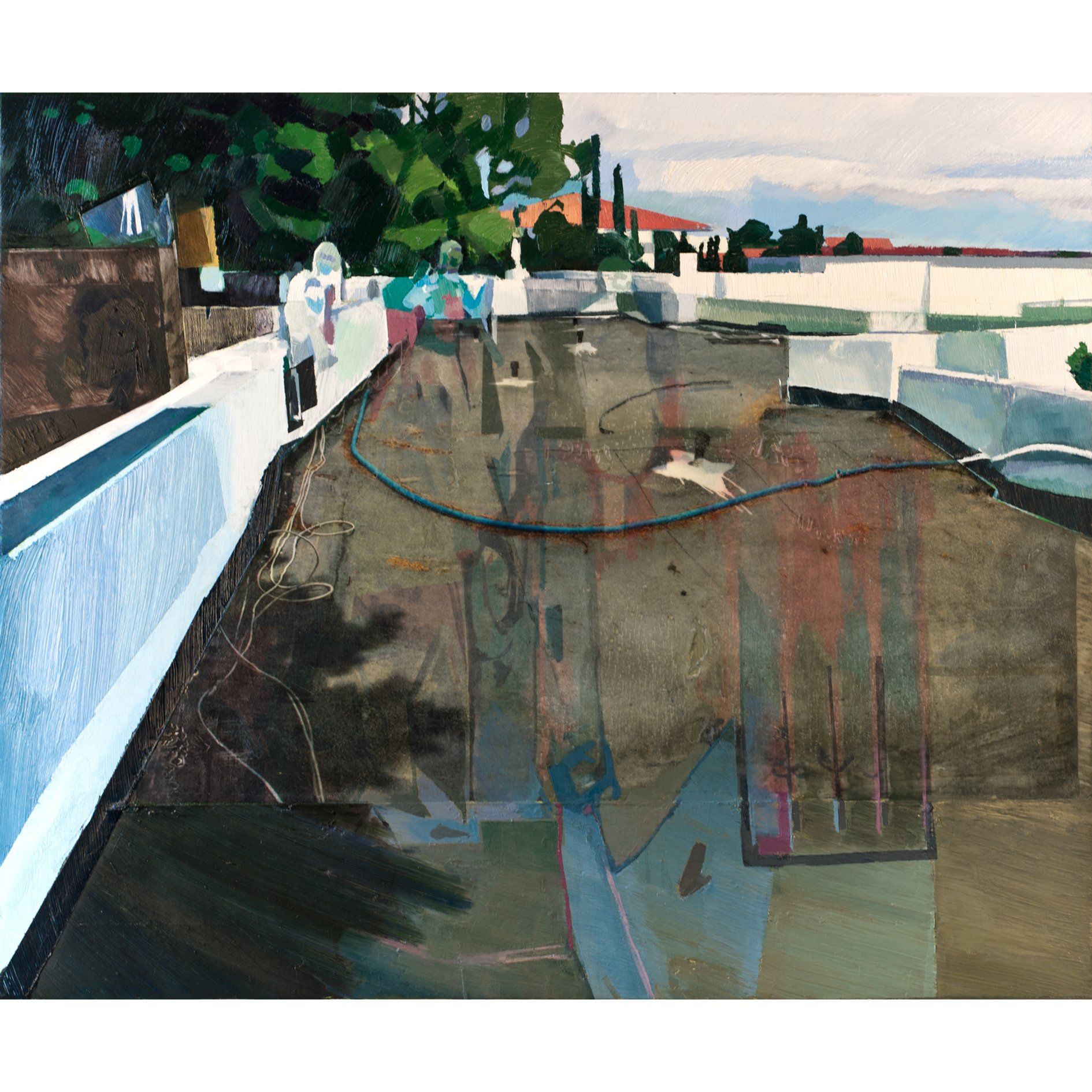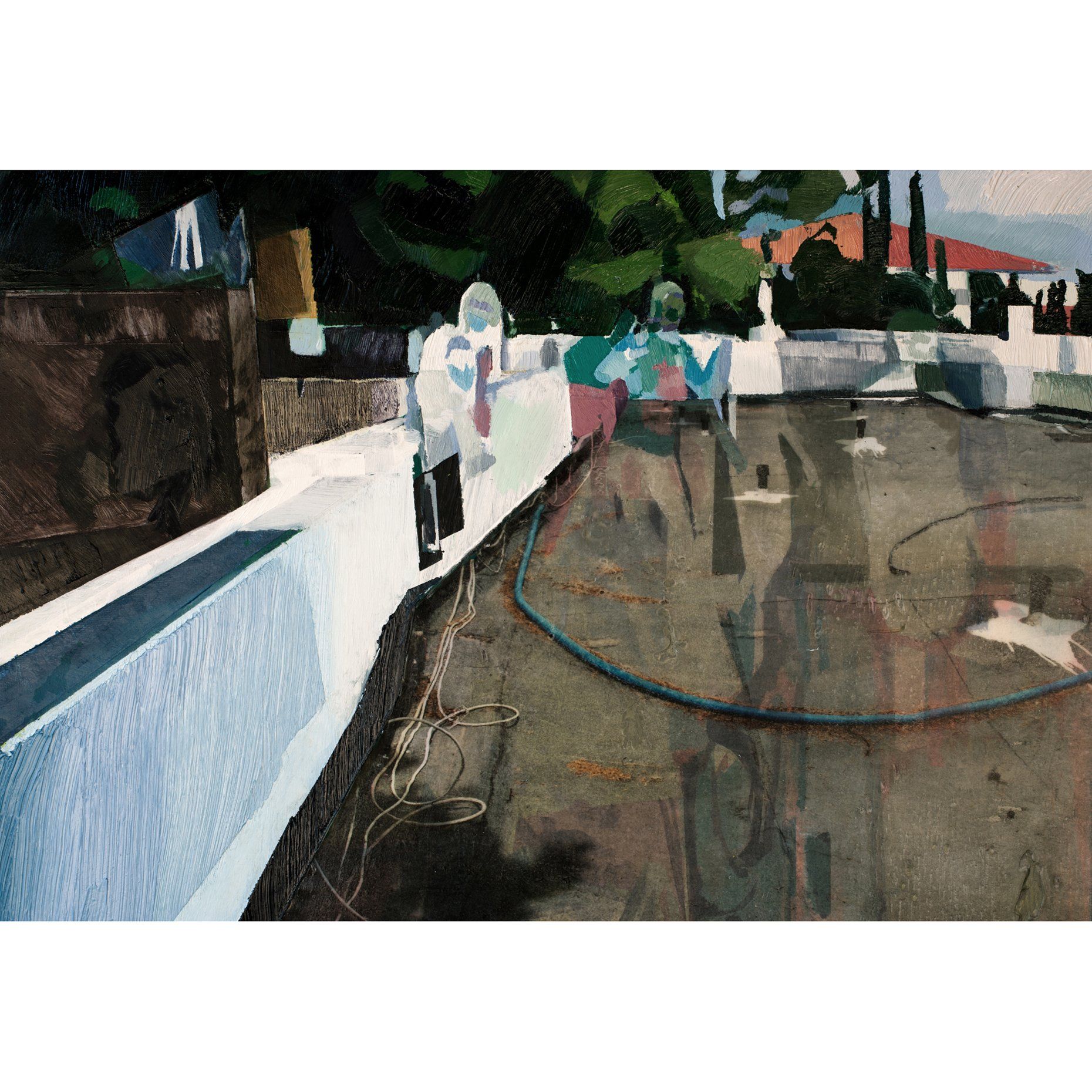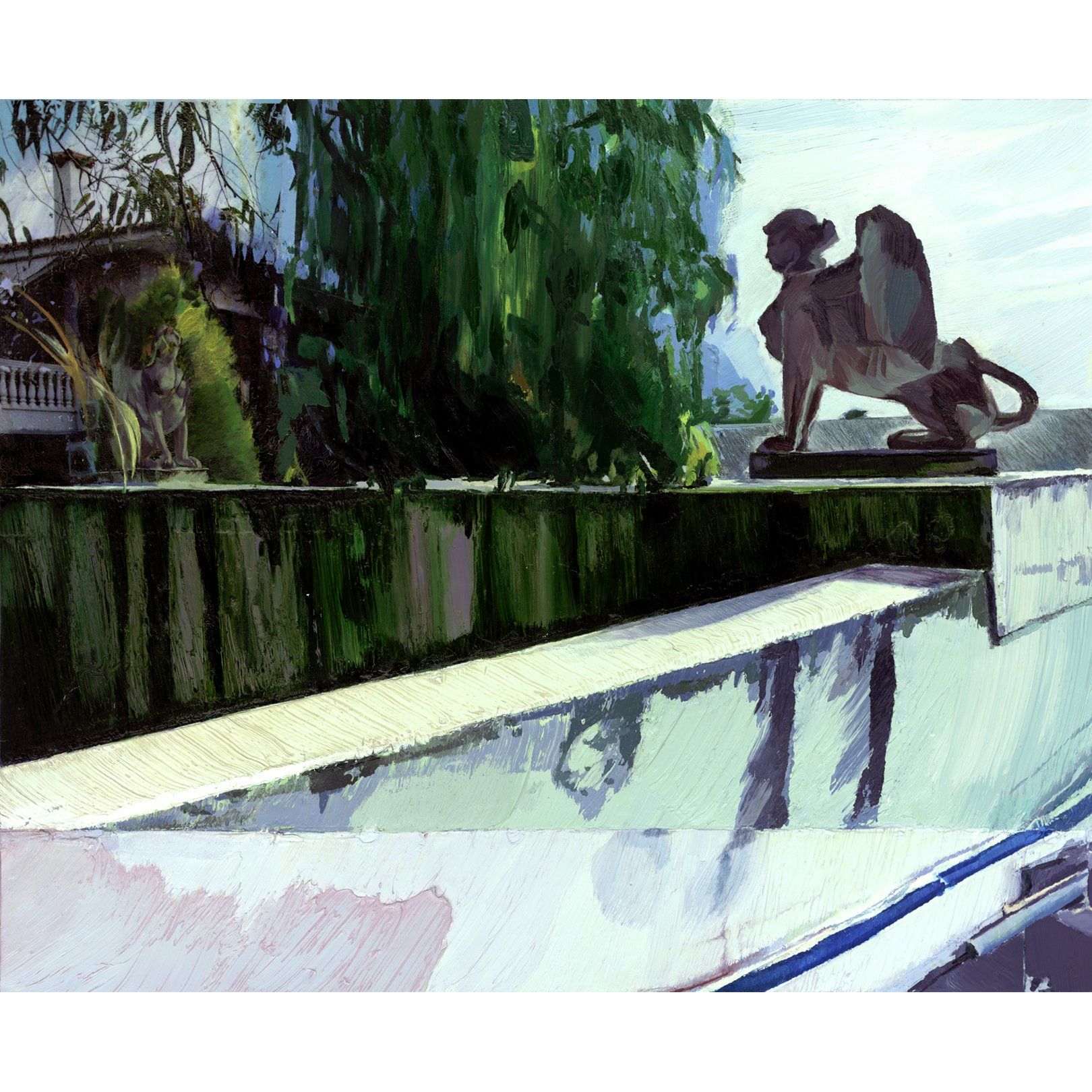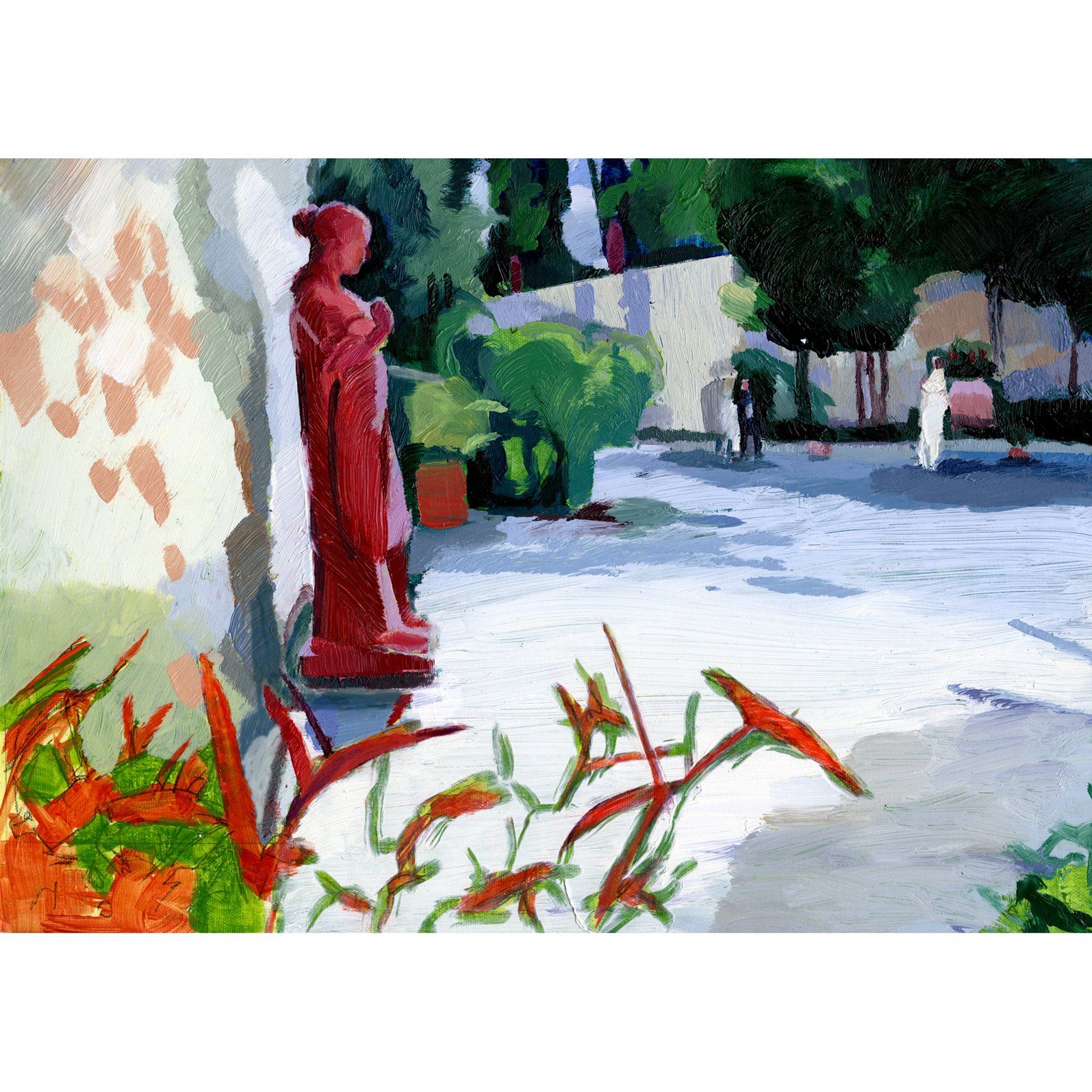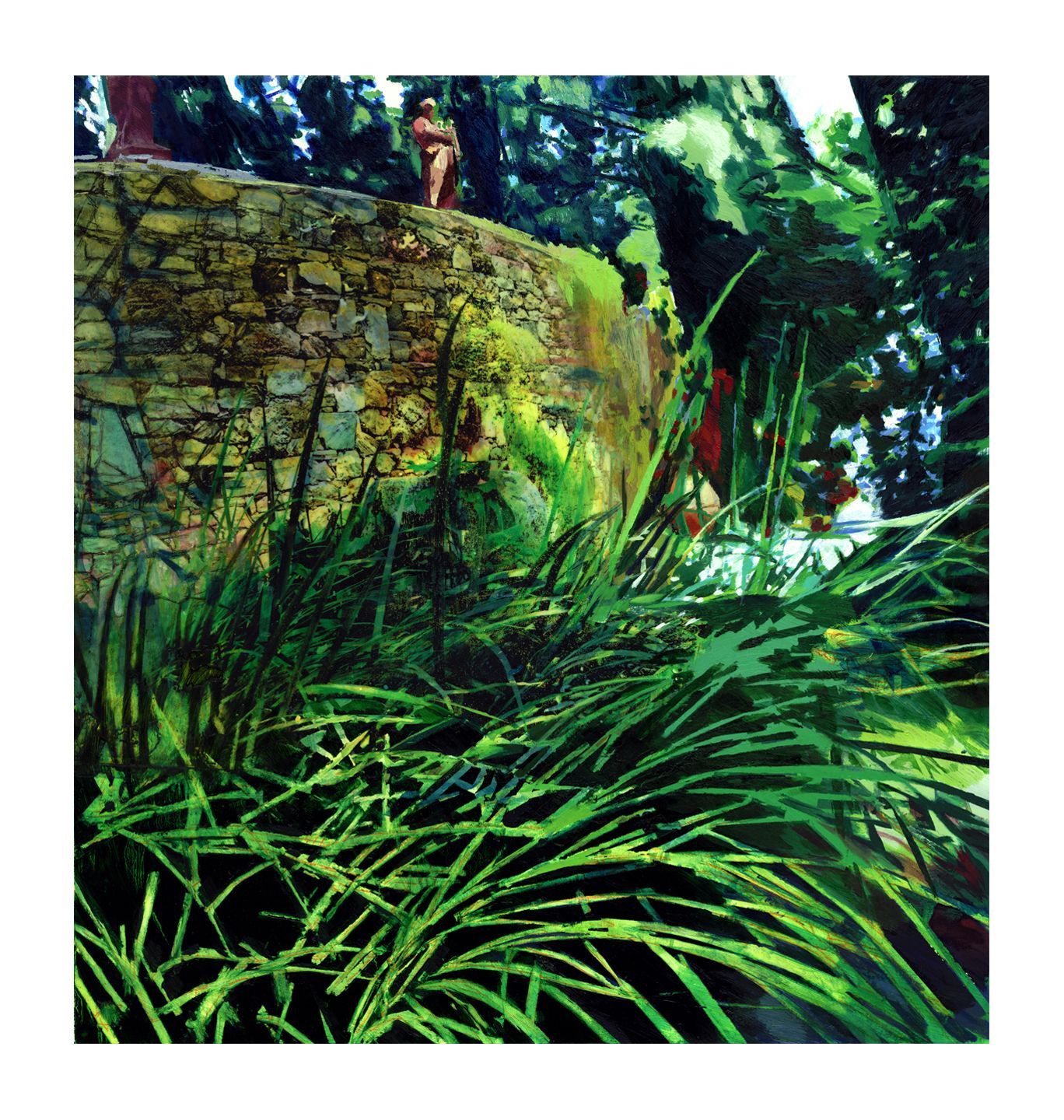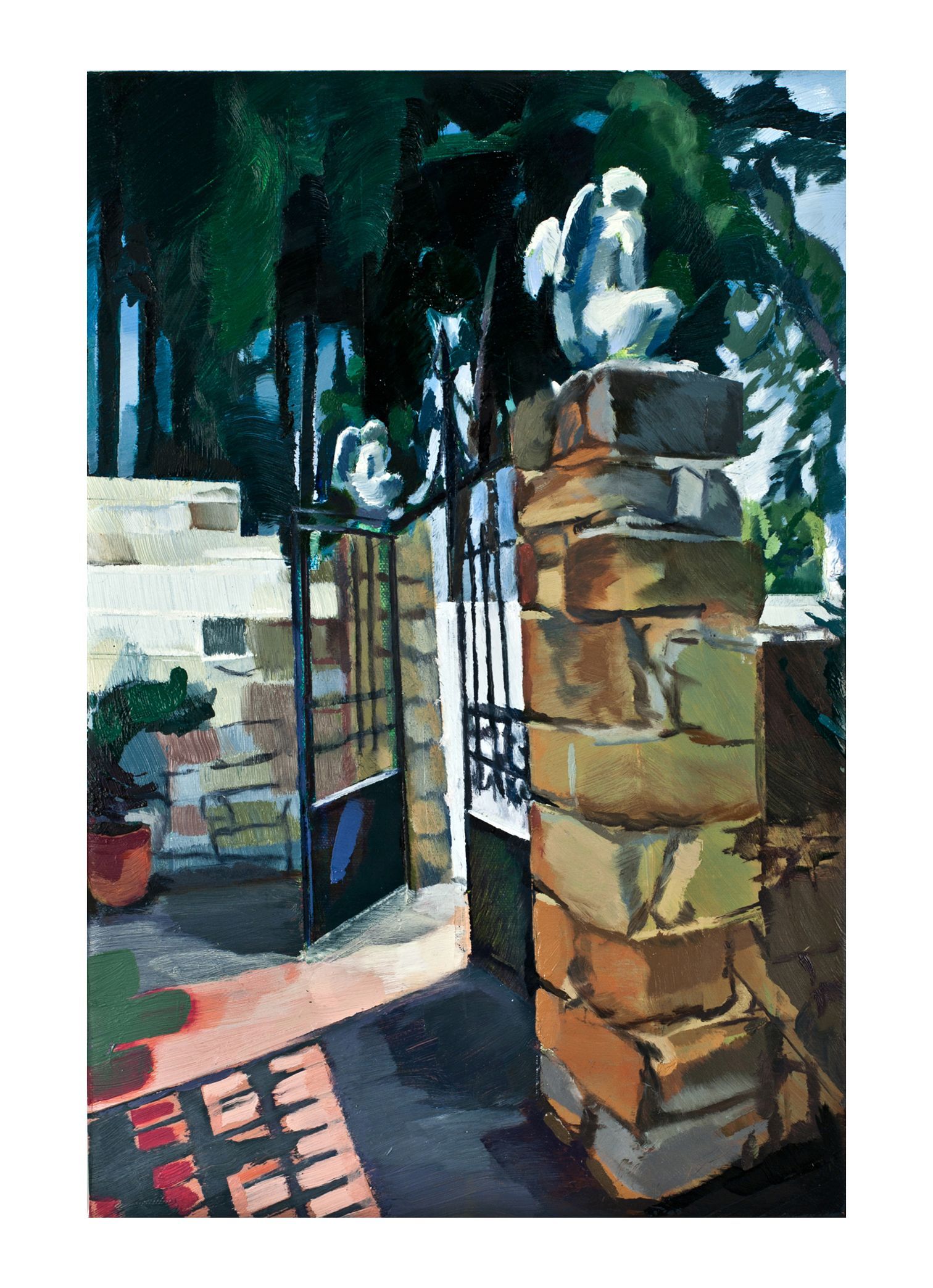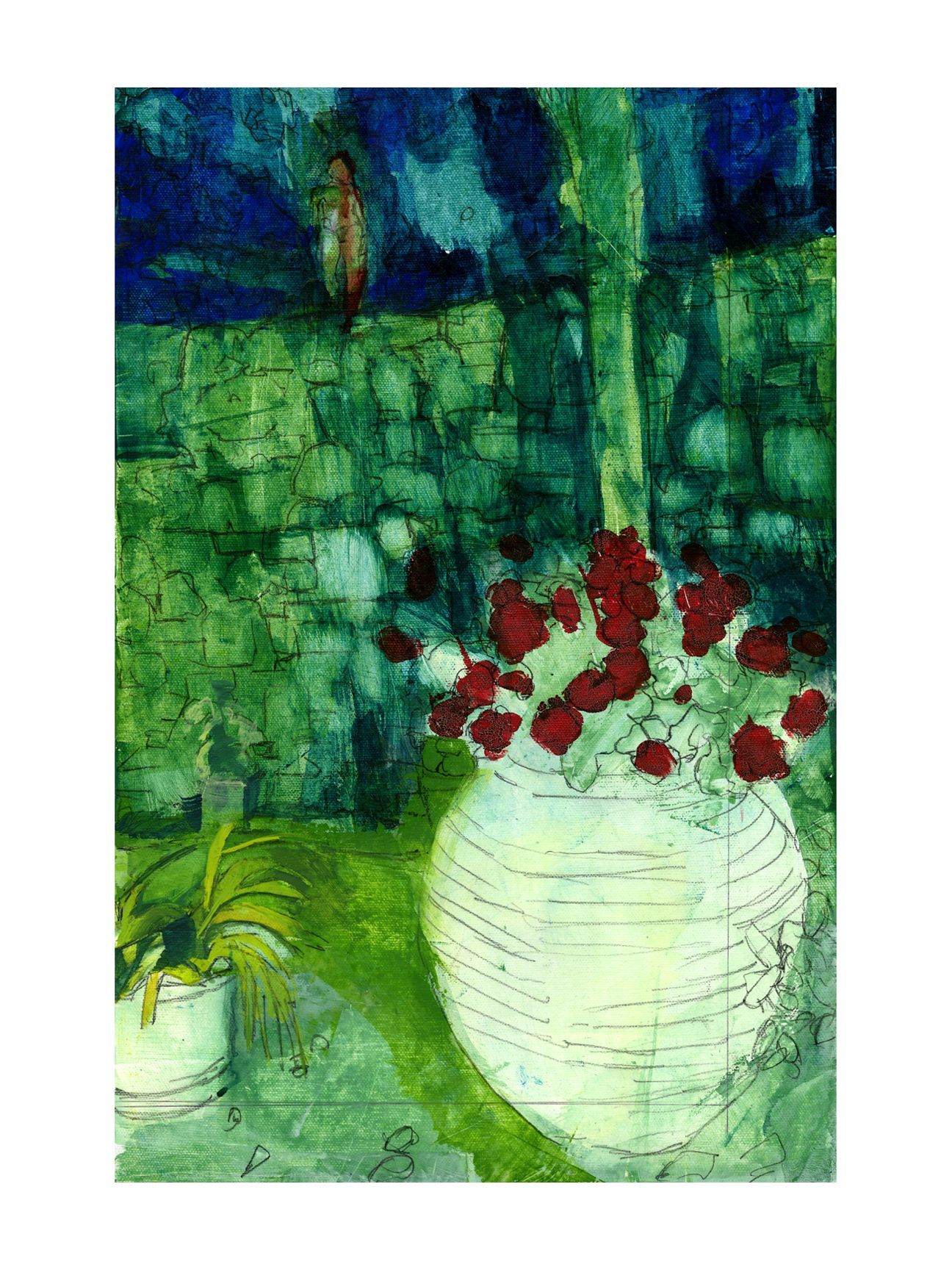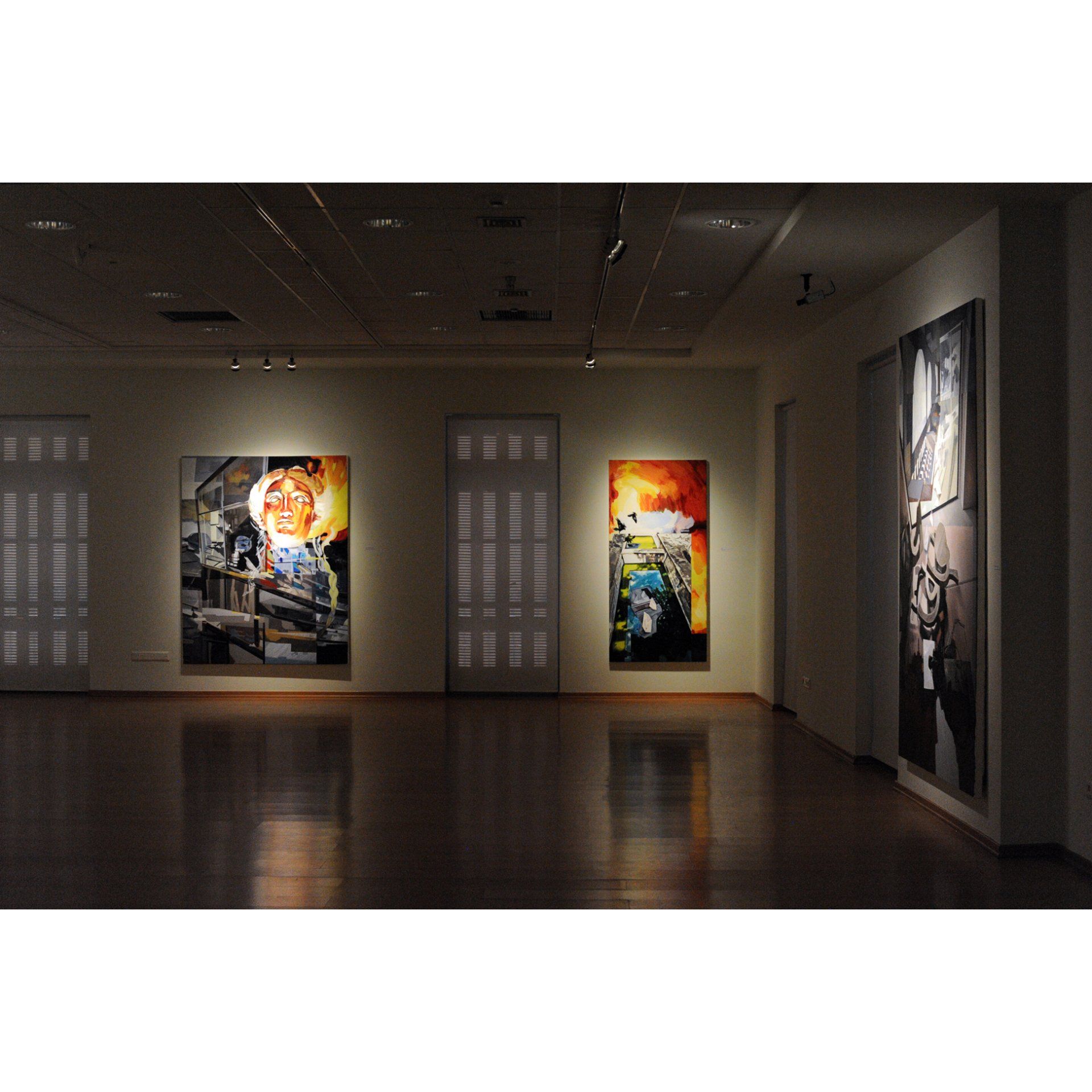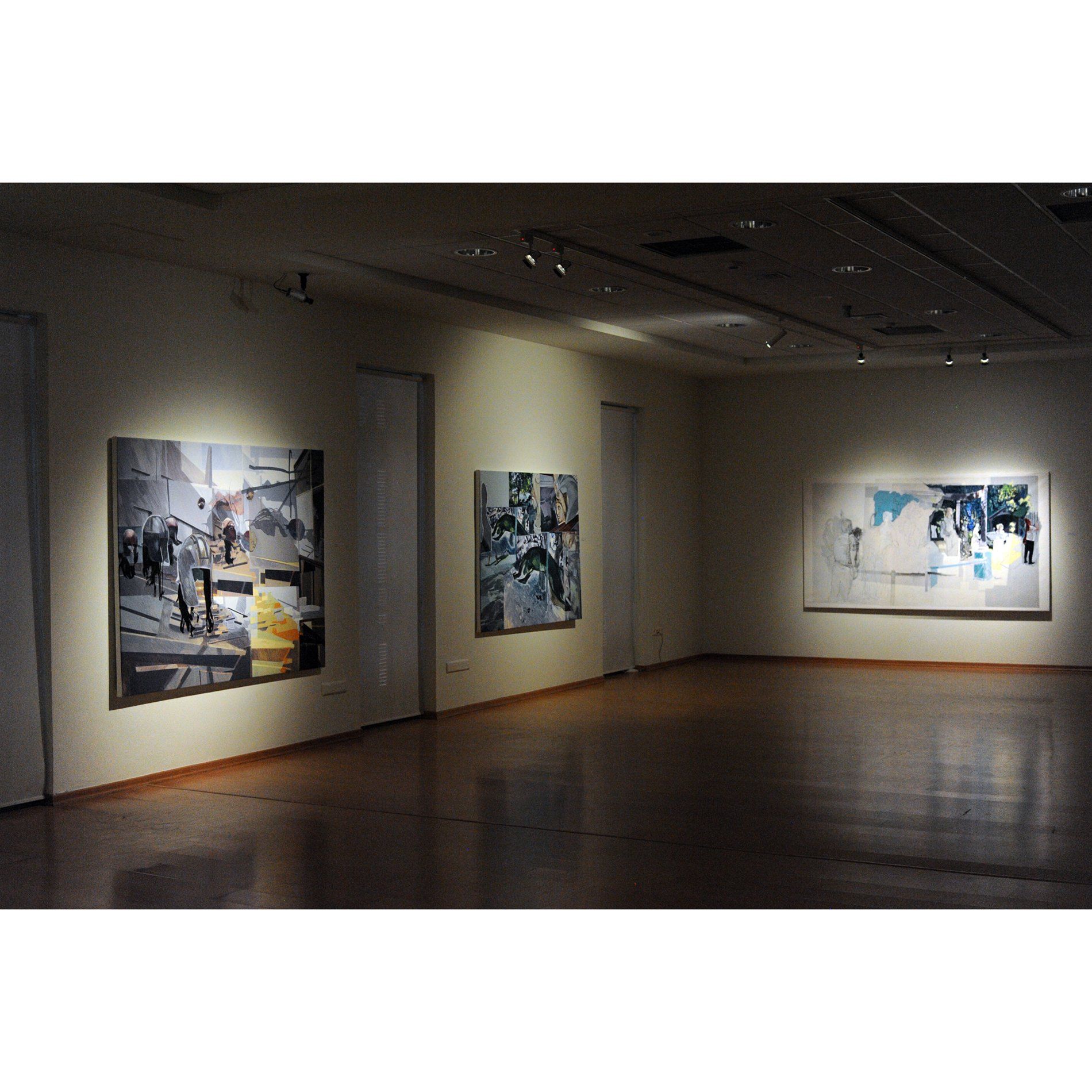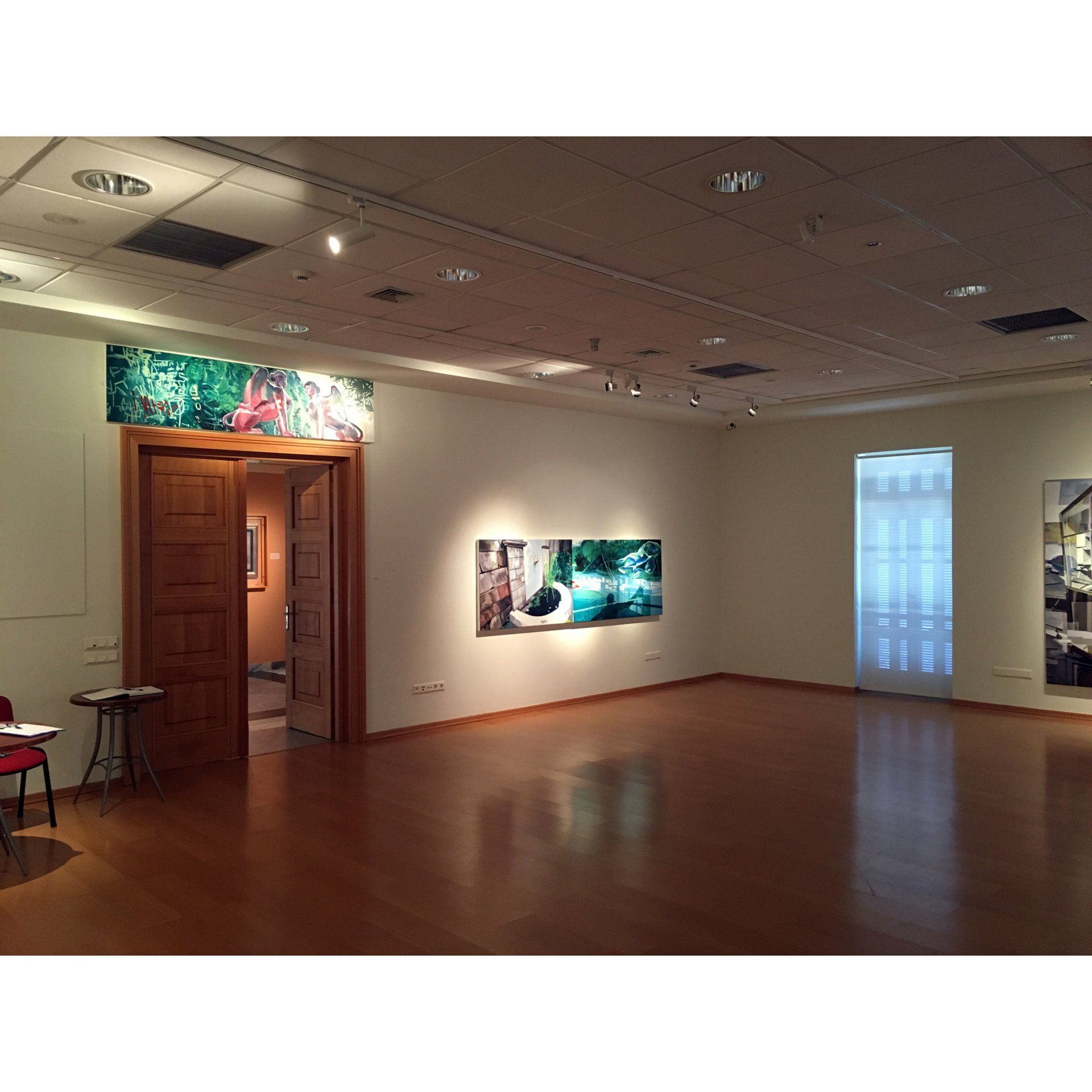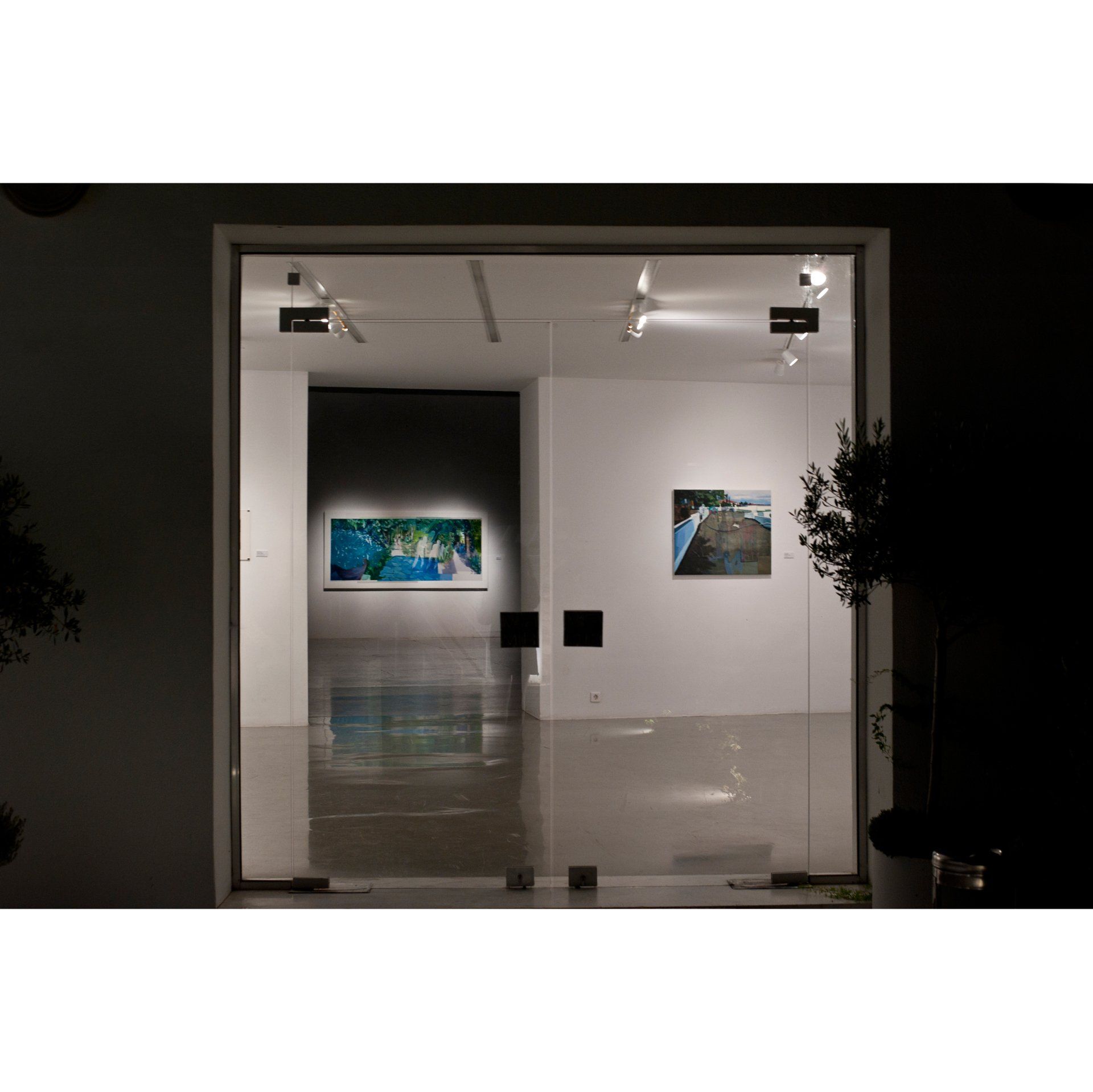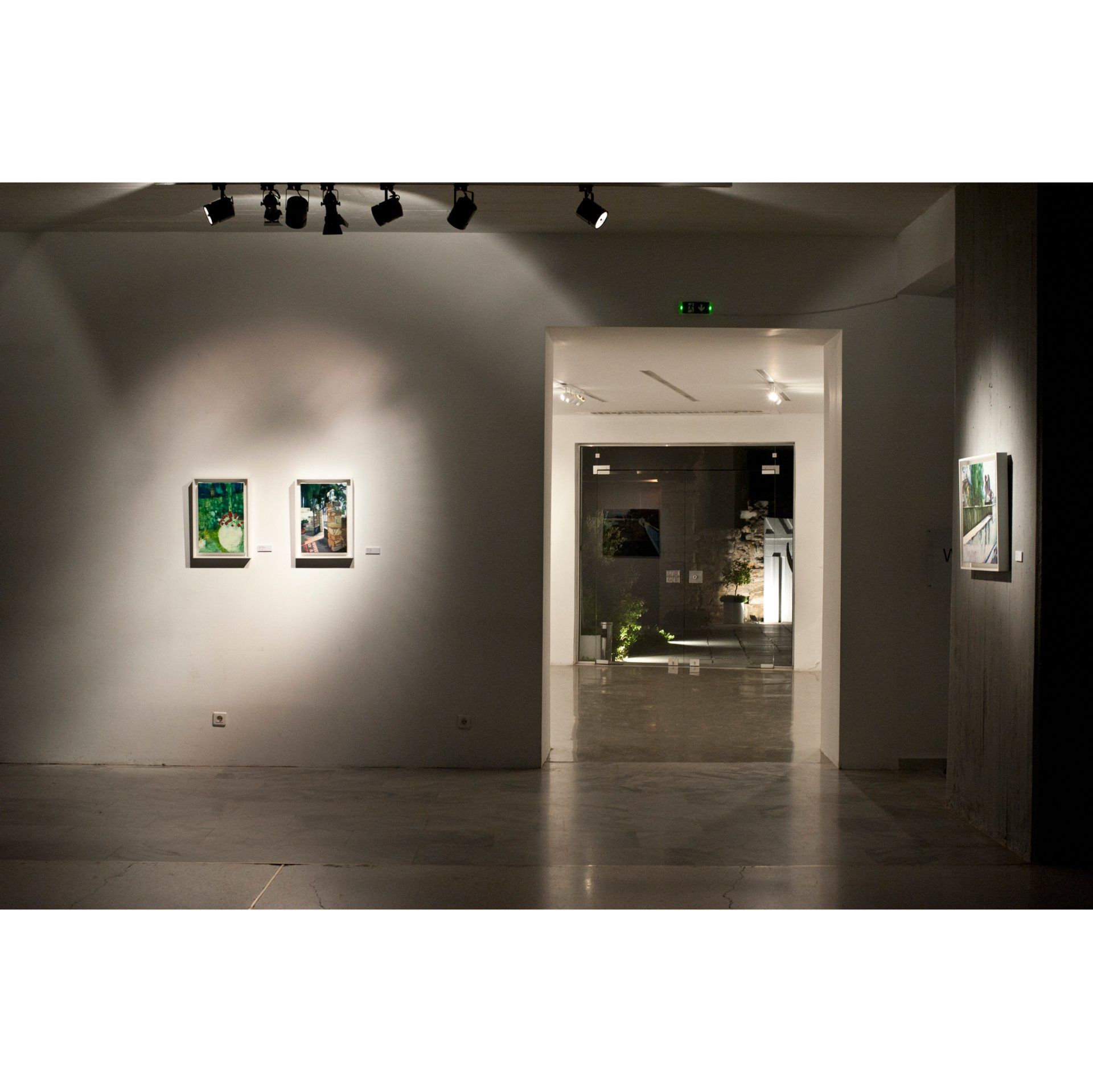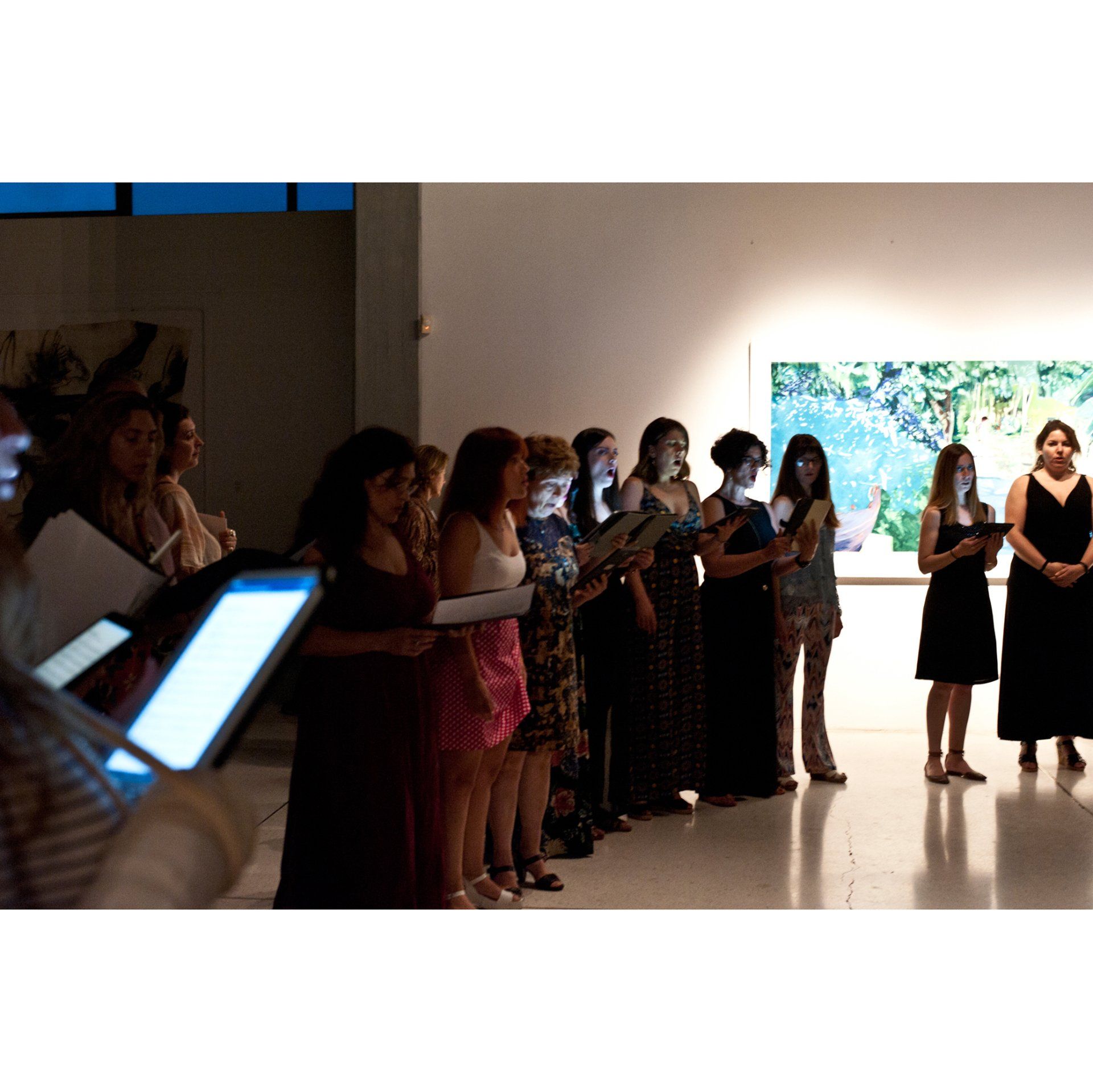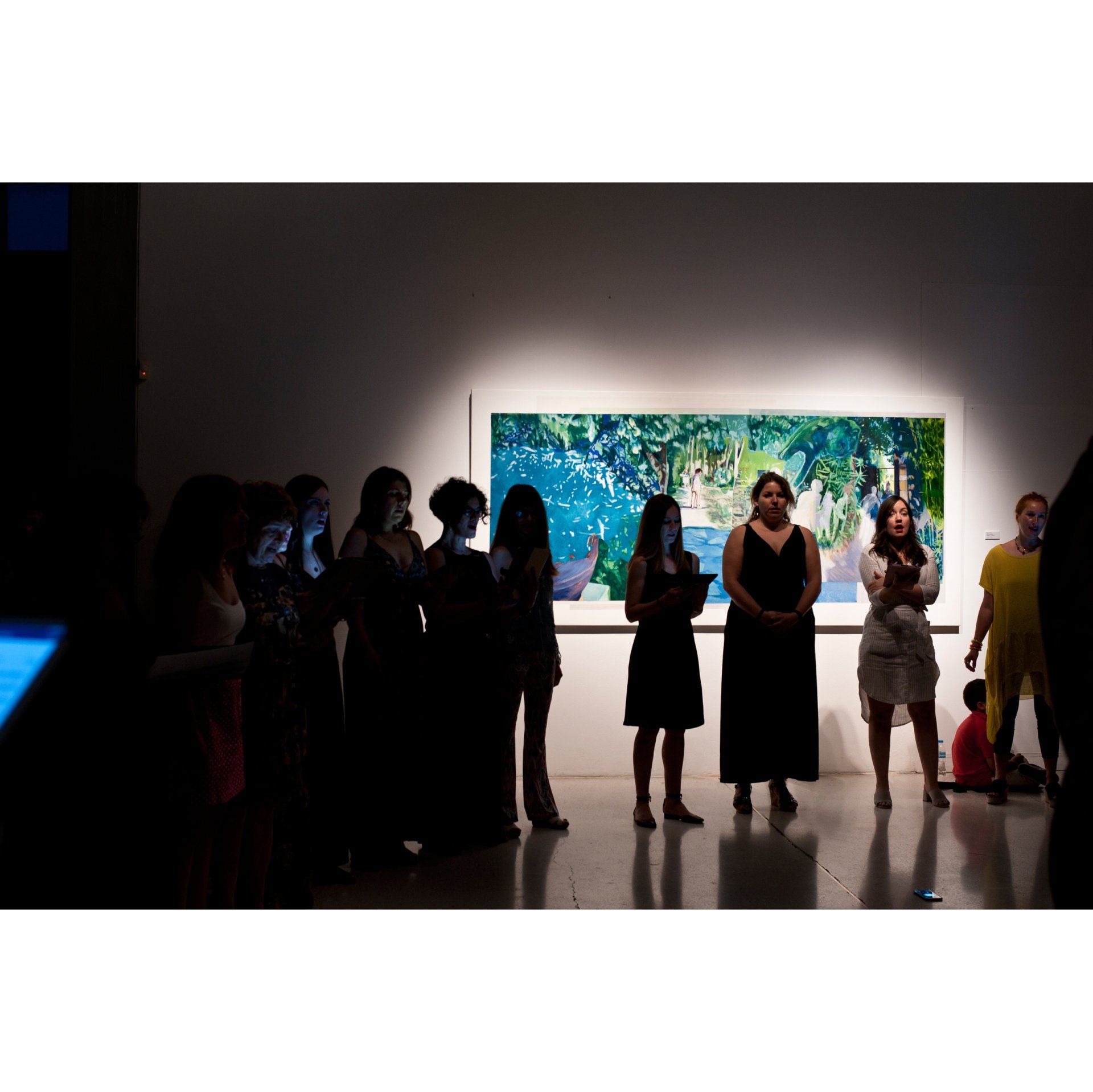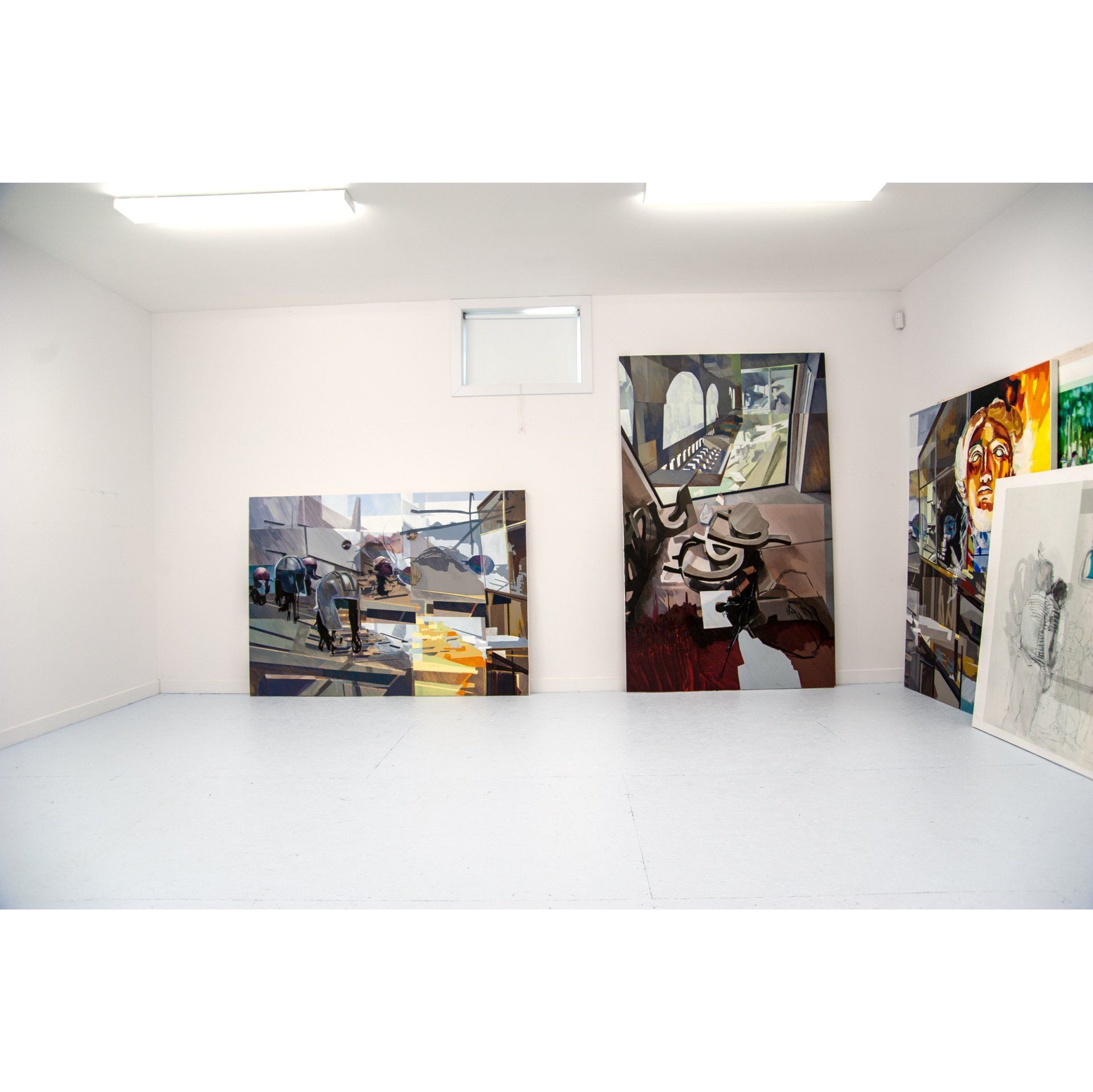Passages
Description
Using myth as a tool to disseminate topics surrounding land, people, and sustainability, Passages explores a weaving of ancient stories, archetypes, and current events. This project was an opportunity to dive into the past to ask what the ancient gods might do in modern times; how their stories relate to people and land. More specifically, how might a Greek tale inform issues around boundary, diaspora, and other sustainability-related topics. My investigation led to the creation of fifteen paintings, which were initiated from a one-month artist residency at the Vorres Museum in 2016. At the time, Greece was gripped by an economic, migration, environmental crisis, and social unrest was common. Reflecting on these challenges, I juxtaposed imagery of antiquity folklore sculptures within contexts that could suggest chaos and conflicting ideologies around the topic of boundary and sustainability. Throughout the project, I referred to artists such as John Singer Sargent, Cy Twombly, and Cecily Brown, who too examined the relevancy of Hellenistic antiquity in contemporary times.
When setting up the exhibitions, I was curious about how an art show, centered on ancient myth, could also influence how visitors engage on sustainability topics. It was an opportunity to learn more about visitors’ knowledge about the UN Sustainability Development Goals (SDG’s) (https://sdgs.un.org/goals) and the role of an art exhibition in increasing dialogue and engagement. During the two exhibitions I conducted a university funded research project titled “Myths re-visited through visual arts: Can old stories guide us to a more sustainable society?”. Encouraged to contemplate the relationship between art and global sustainability goals, visitors completed a questionnaire on the relationship between art, storytelling, and how it can inform sustainability. Over thirty visitors completed the survey and despite a relatively small sample, the results were encouraging. Most participants agreed that art and myth had the capacity to evoke viewers’ imagination about the earth as an entity; to generate more empathy and compassion towards it.
Acknowledgements
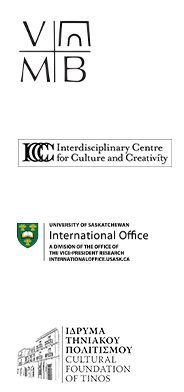
The University of Saskatchewan assisted me with several aspects of this project. In particular, the ICCC (Interdisciplinary Centre for Culture and Creativity) for assisting me with a Graduate Catalyst Grant for Anahita Akhavanmoghaddam (MFA Graduate) to participate as Production Assistant while I was an artist in residence at the Vorres Museum, Greece in May-June of 2016. This grant will also support her Curatorial role in writing and selecting art works from Eveline Kolijn and myself for “A Visit to the Vorres Museum” at the Gordon Snelgrove Gallery in February 2017.
In 2019 the Global Community Service Fund (International Research, University of Saskatchewan) supported research activities around two solo exhibitions in Greece. As a co-applicant to the fund, Tia Furstenberg (BFA) assisted in creating a questionnaire addressing Sustainable Development Goals. She travelled to Athens and the island of Tinos to document the talks, receptions, and gain experience with assisting with the de-mounting of the shows, including packing, and shipping artworks from Greece. Tia, Dr. Caterina Pizanias (Curator), and myself are now assessing the results from the questionnaires, and will develop an essay –made public through an essay and a talk at University of Saskatchewan in 2020, and the Atiner Conference in Athens in 2023. Lucy Zhou (BSc USask) assisted me in transcribing the data from the questionnaires. Two exhibitions of the Passages project (2016-2019) exhibited in Greece because of the commitment of partners including the Cultural Foundation of Tinos, Vorres Museum, Canada to Greece Embassy, OTE Choir, Vorres Museum, and most importantly Dr. Caterina Pizanias. Her curatorial vision for Canadian artists to be visible abroad and to bring Greek art to Canada has inspired colourful dialogue between geographically distant but amiable cultures.

